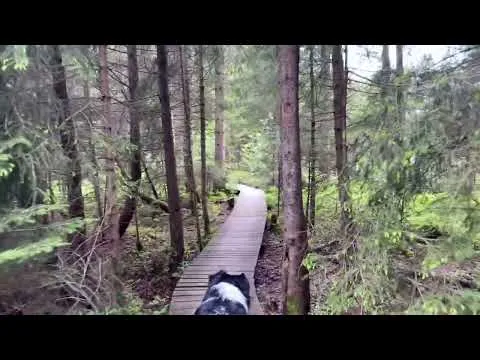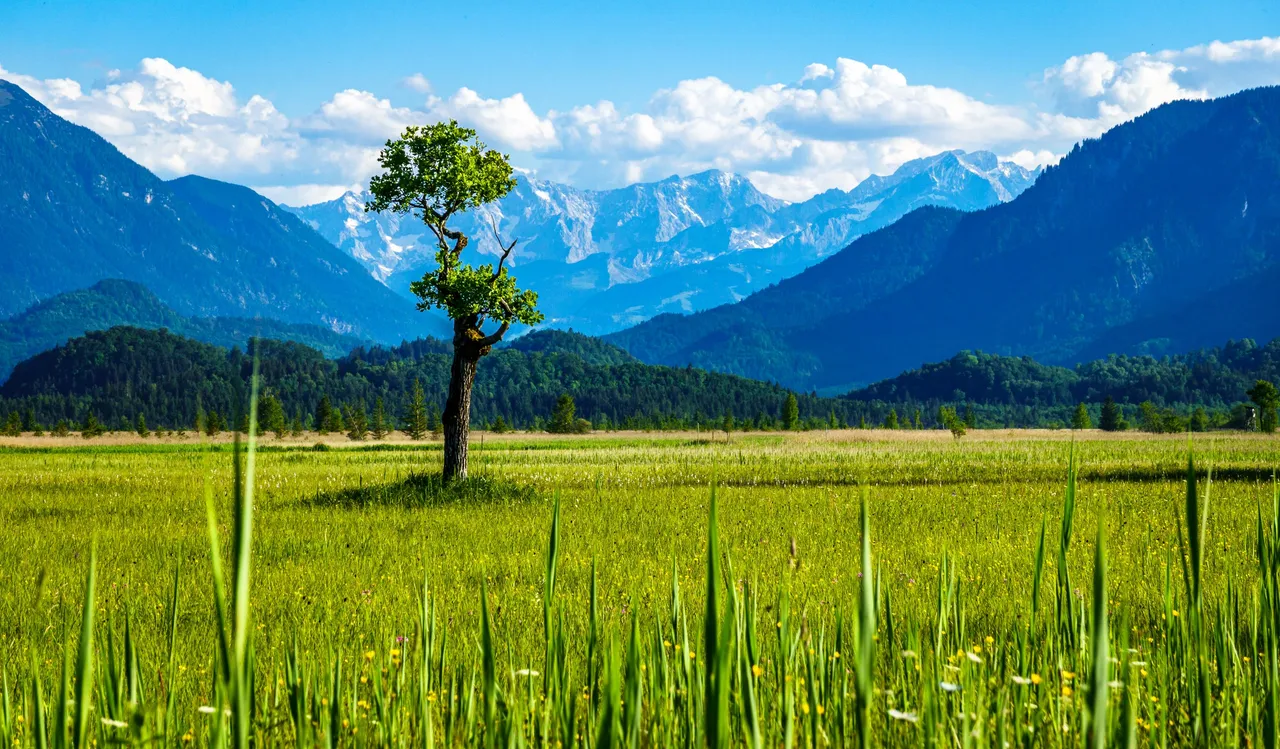
As you know I am still spending some time in Bavaria, Germany, and finally, the weather changed!!! For the past few days it had been raining nonstop but now step by step we are coming closer to summer temperature.
So I decided to check out one of the most famous places around the German Alps called the "Munauer Moos". Hardly any tour around Murnau am Staffelsee offers more insights into intact nature than the well-known and popular Moos 12km circular route. And as it had been raining that much I was sure that it even must look more special than ever!!
So I took my dog Chapo with me and drove to the official starting point for this hike: The parking at Ramsach Church (built in the 8th century).
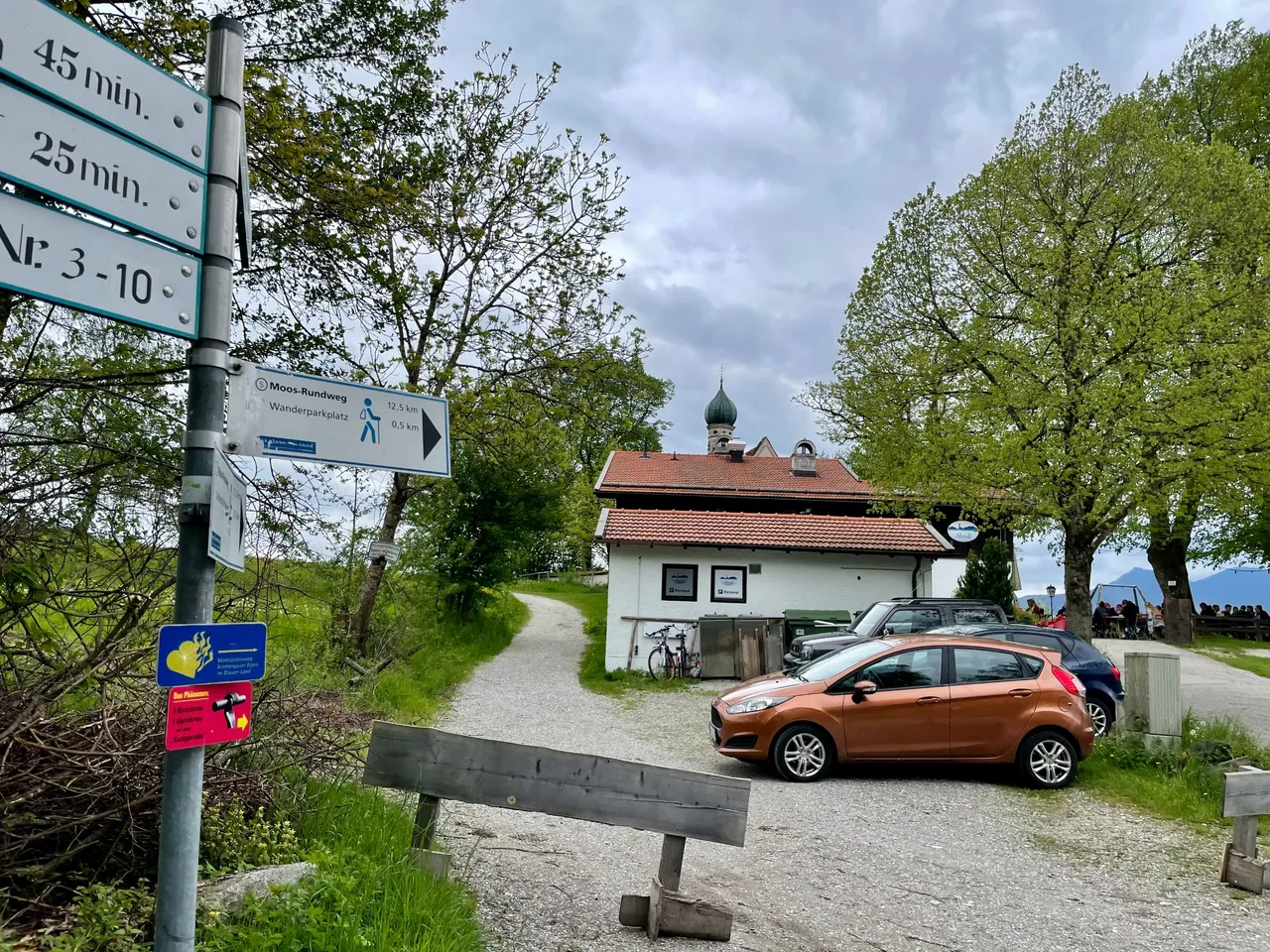
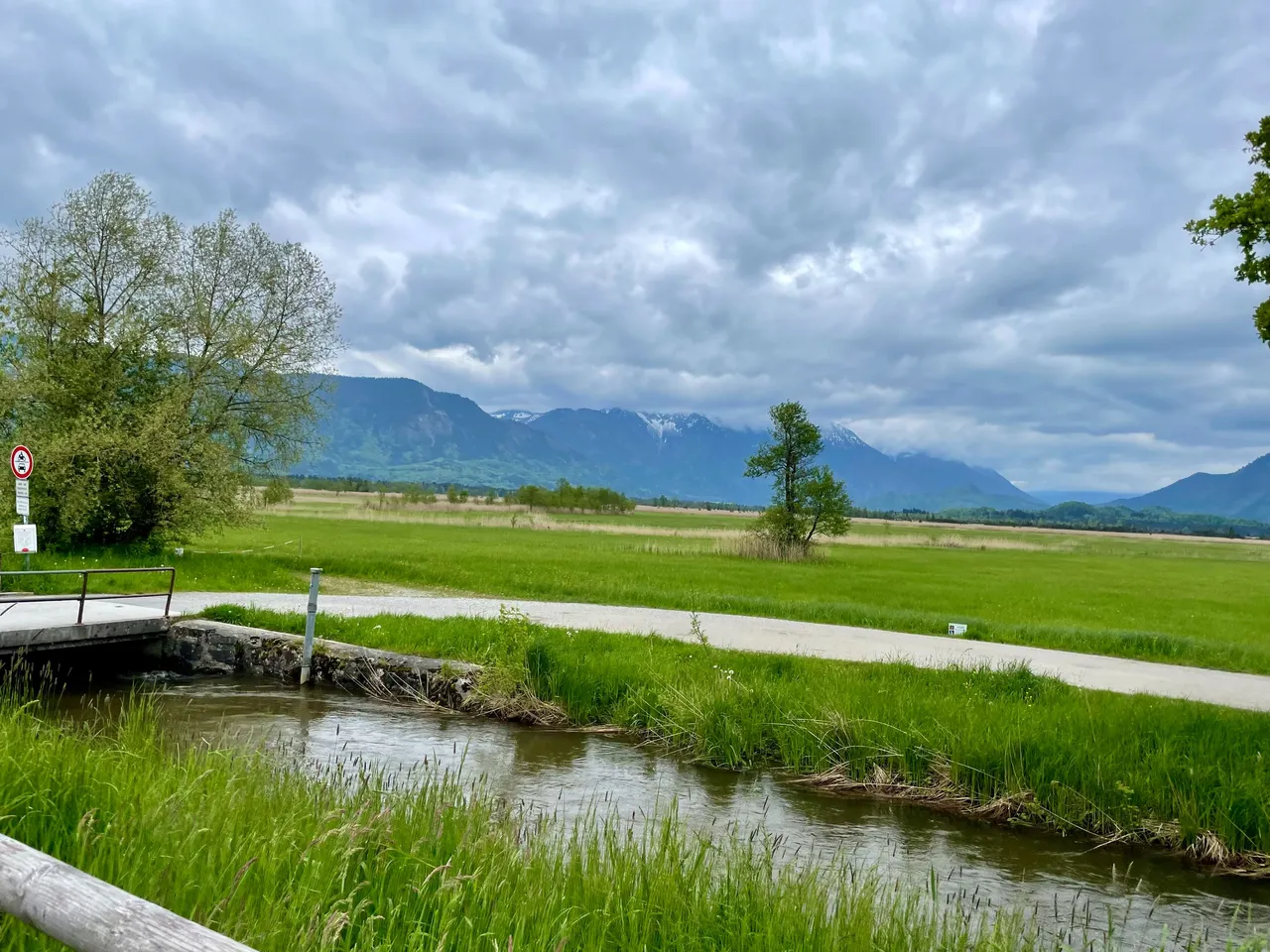
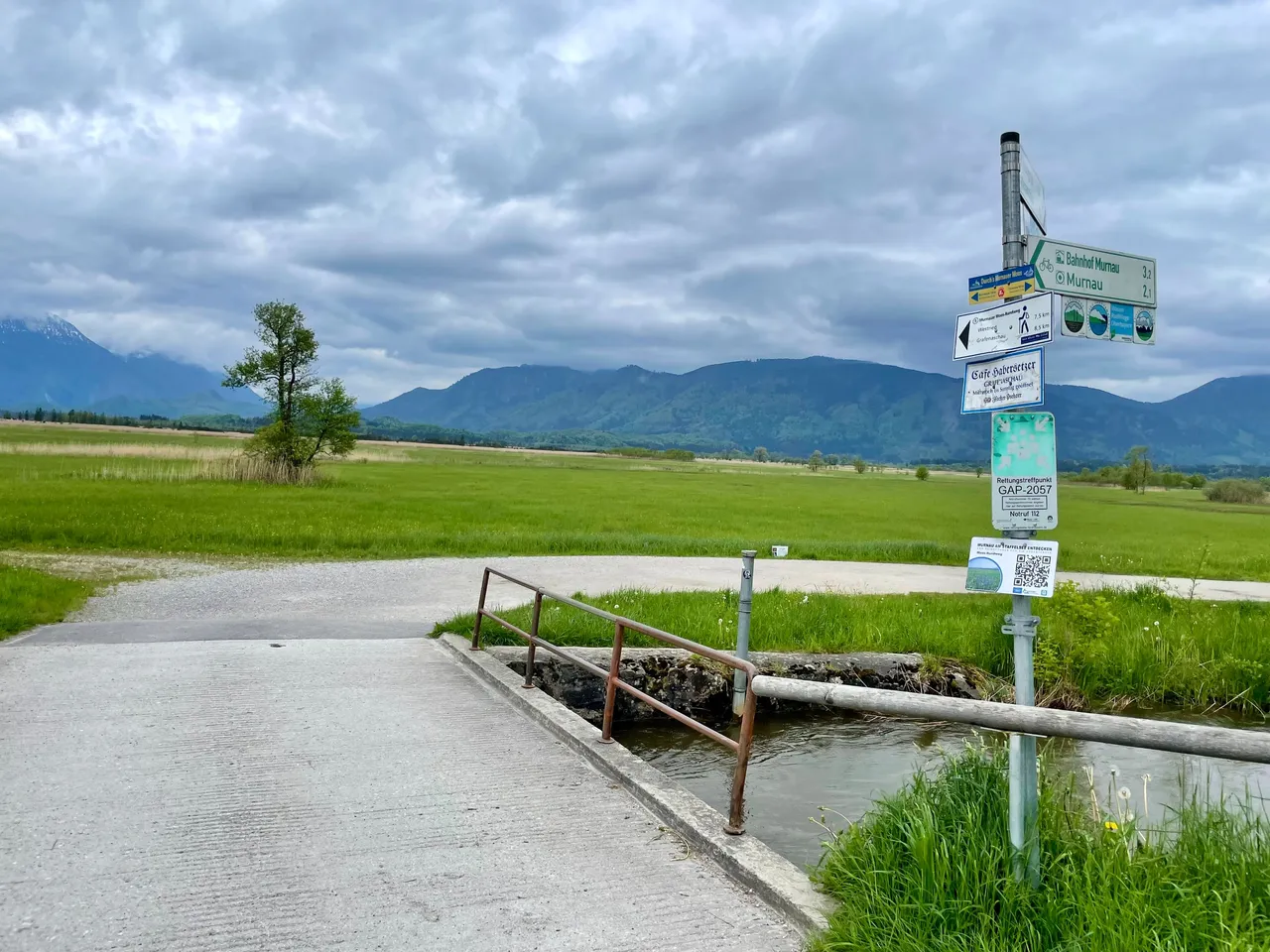
Starting from the Ramsach Church - also known as Ähndl - the hike first leads along the Ramsach and Lindach streams always with changing impressions from Moos and the nearby mountains.
Here you find large areas of litter meadows, low and transitional moors, spring funnels, backwaters, and residual lakes with fully developed raised moors combined to form a complex of habitats with many rare and endangered species.
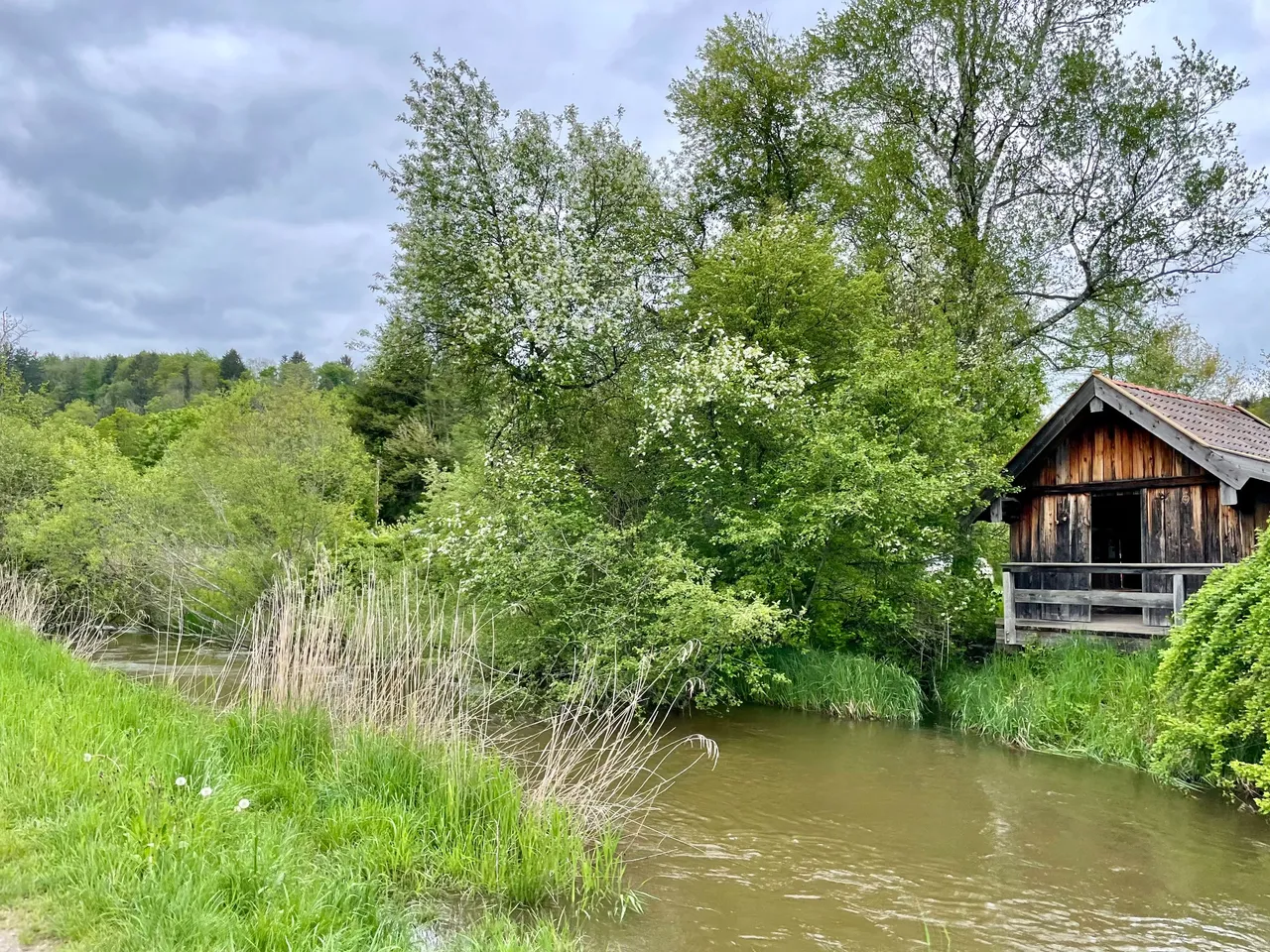
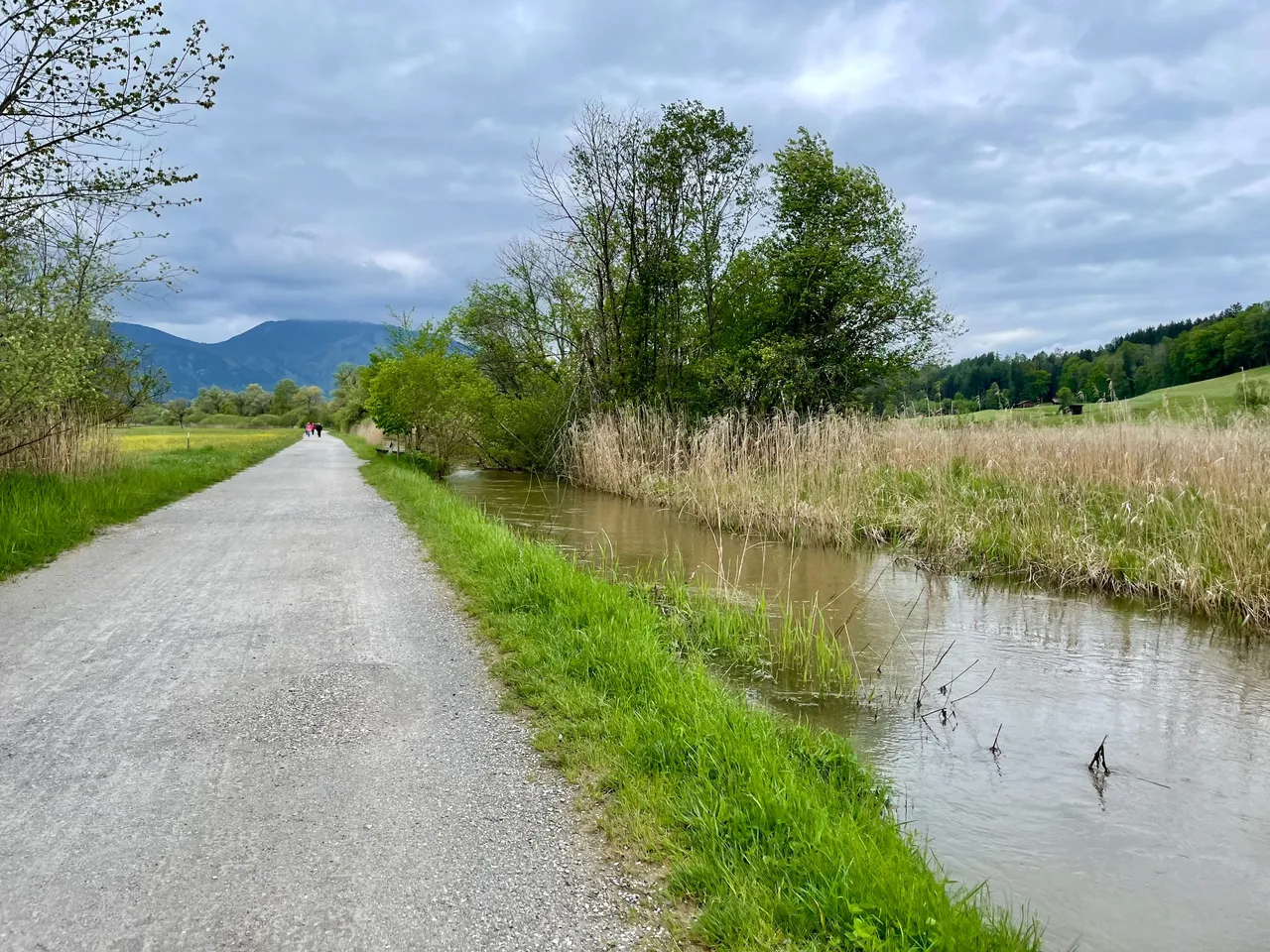
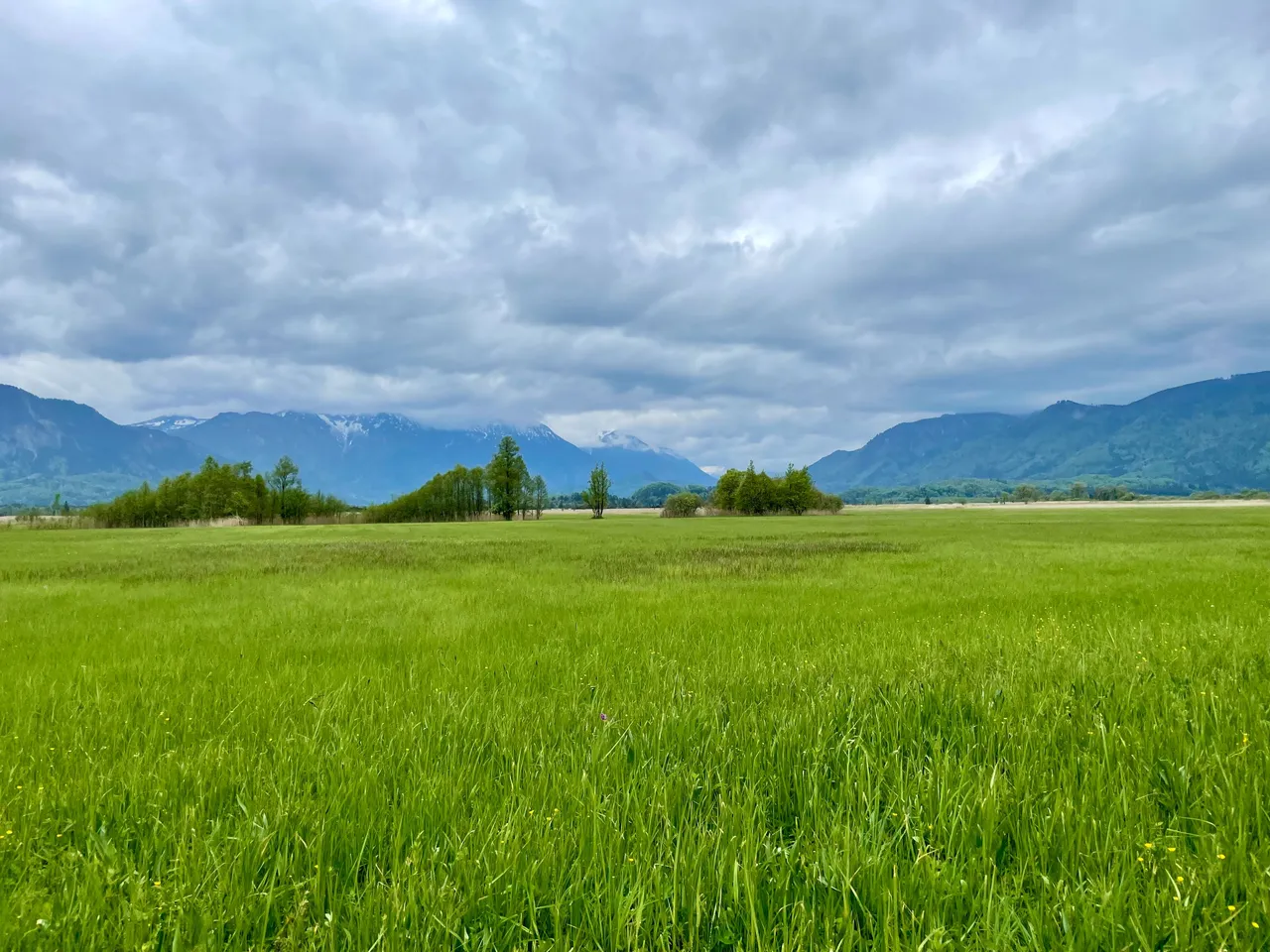

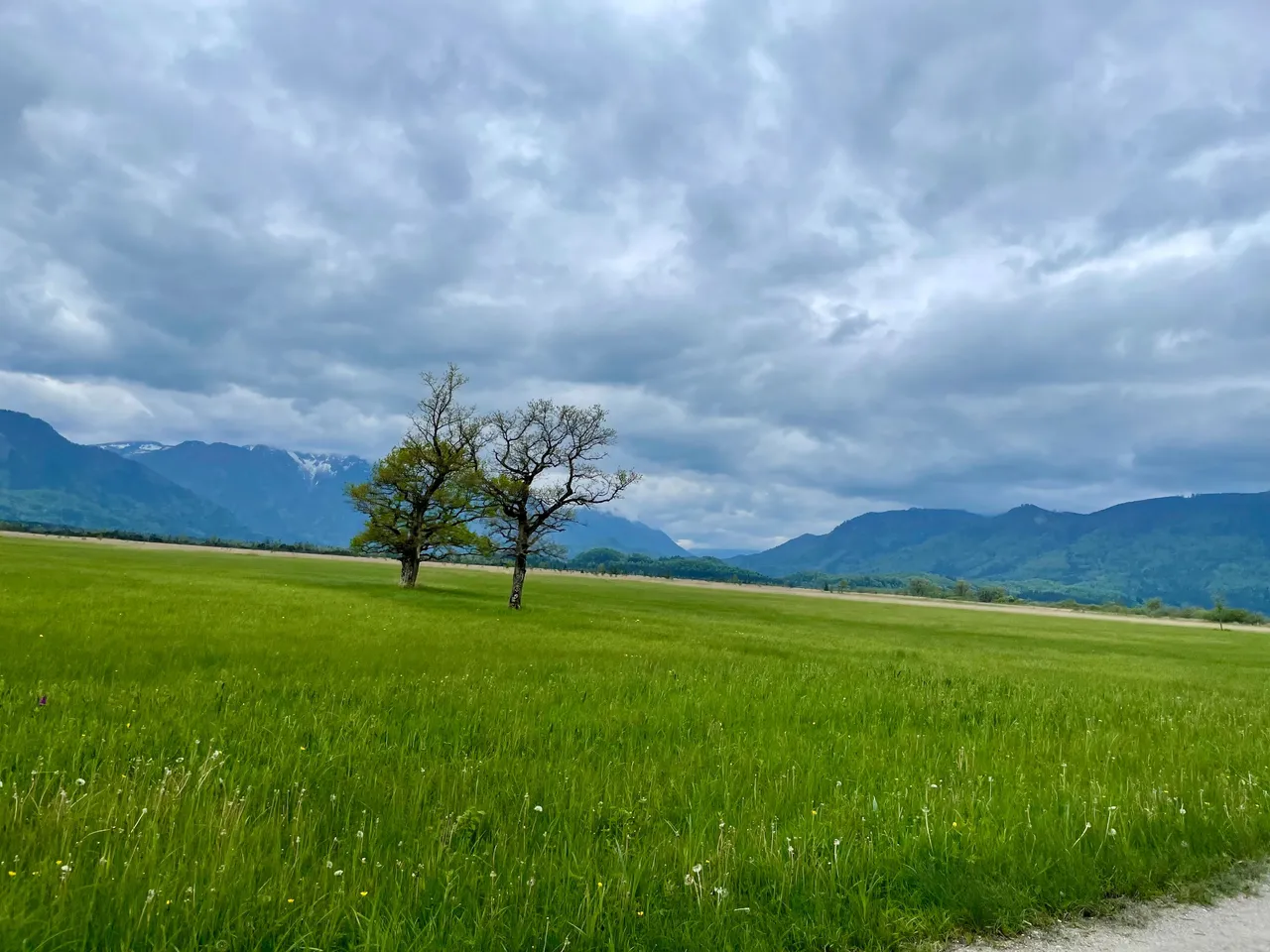
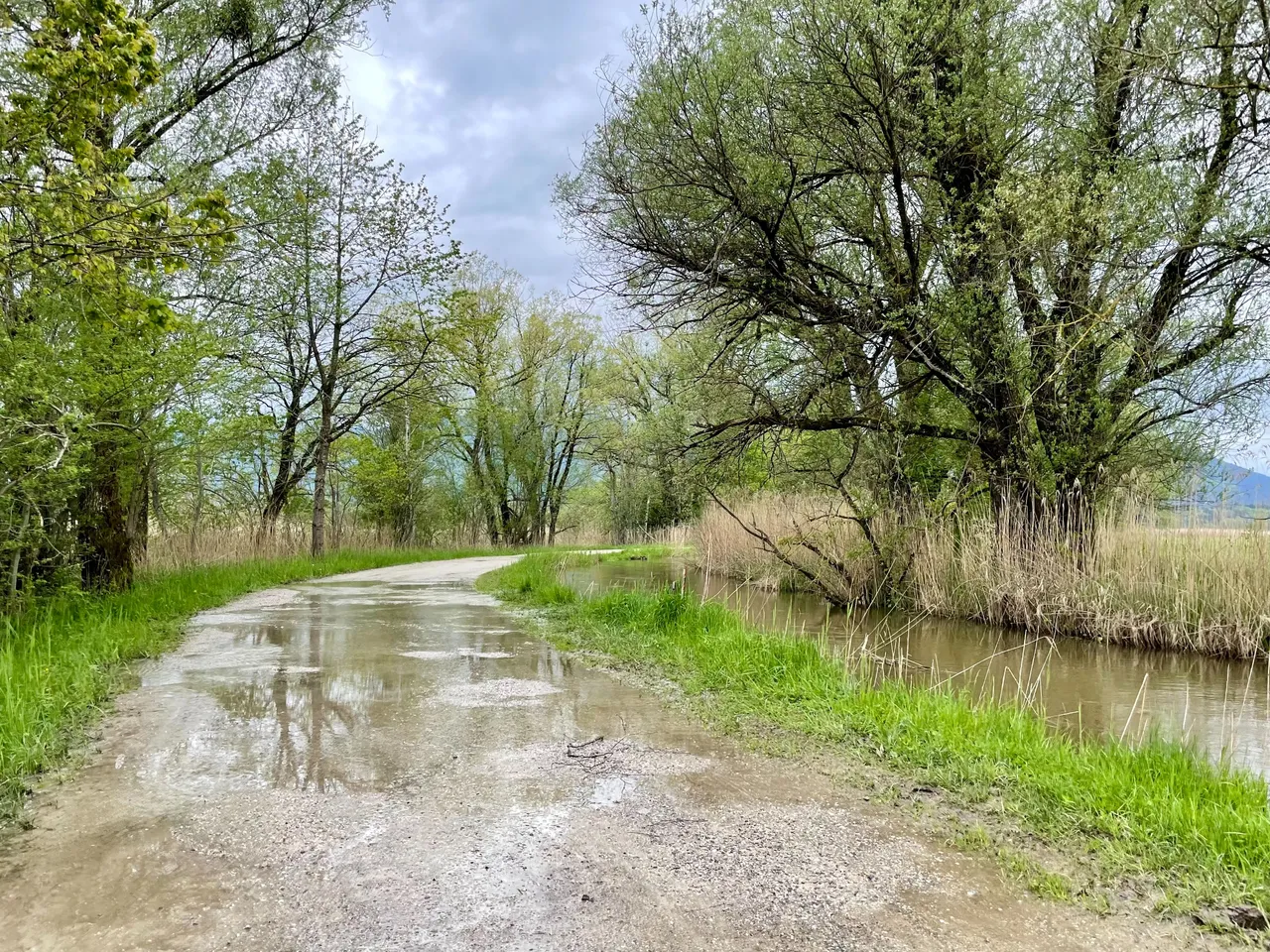
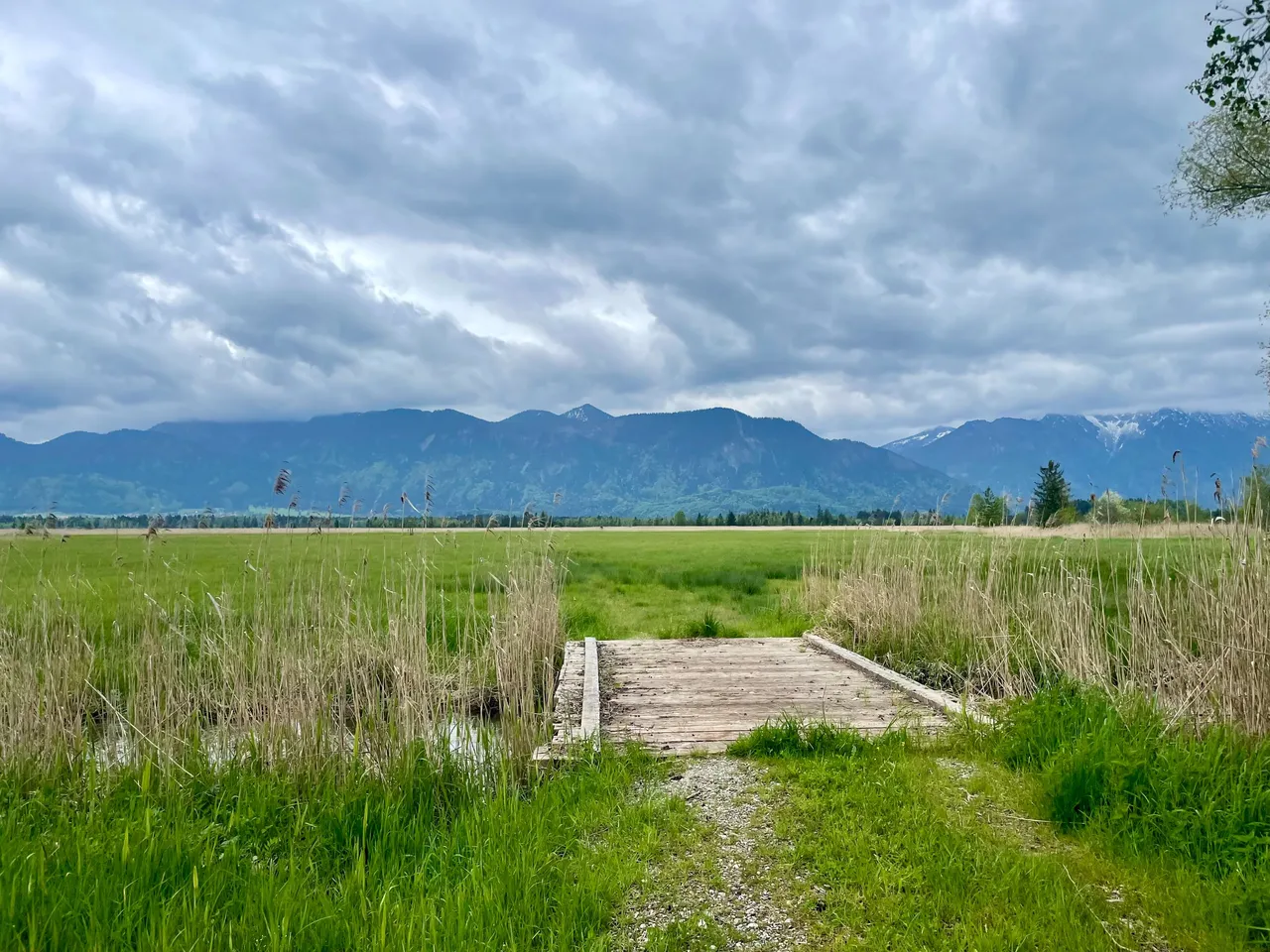
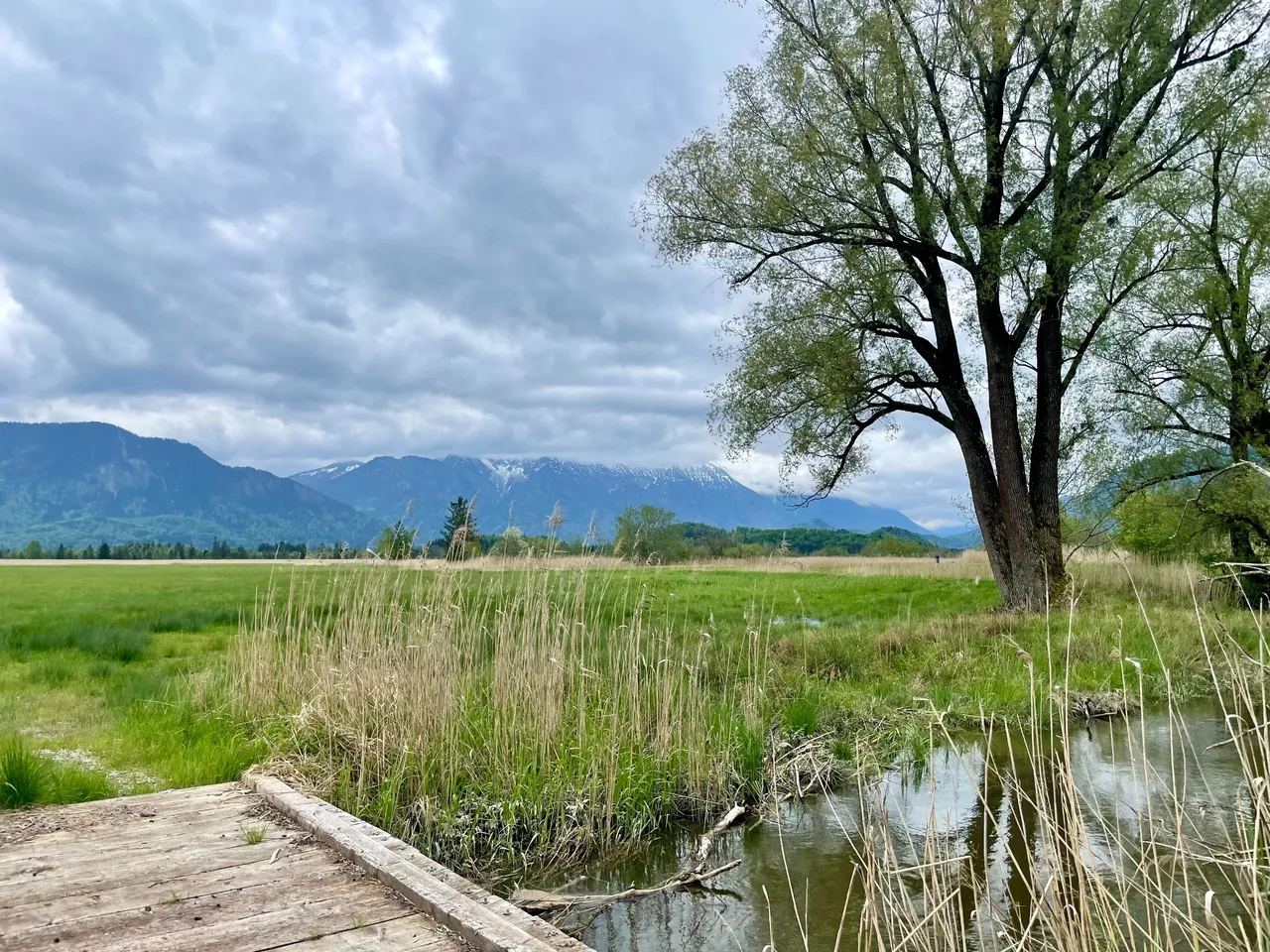
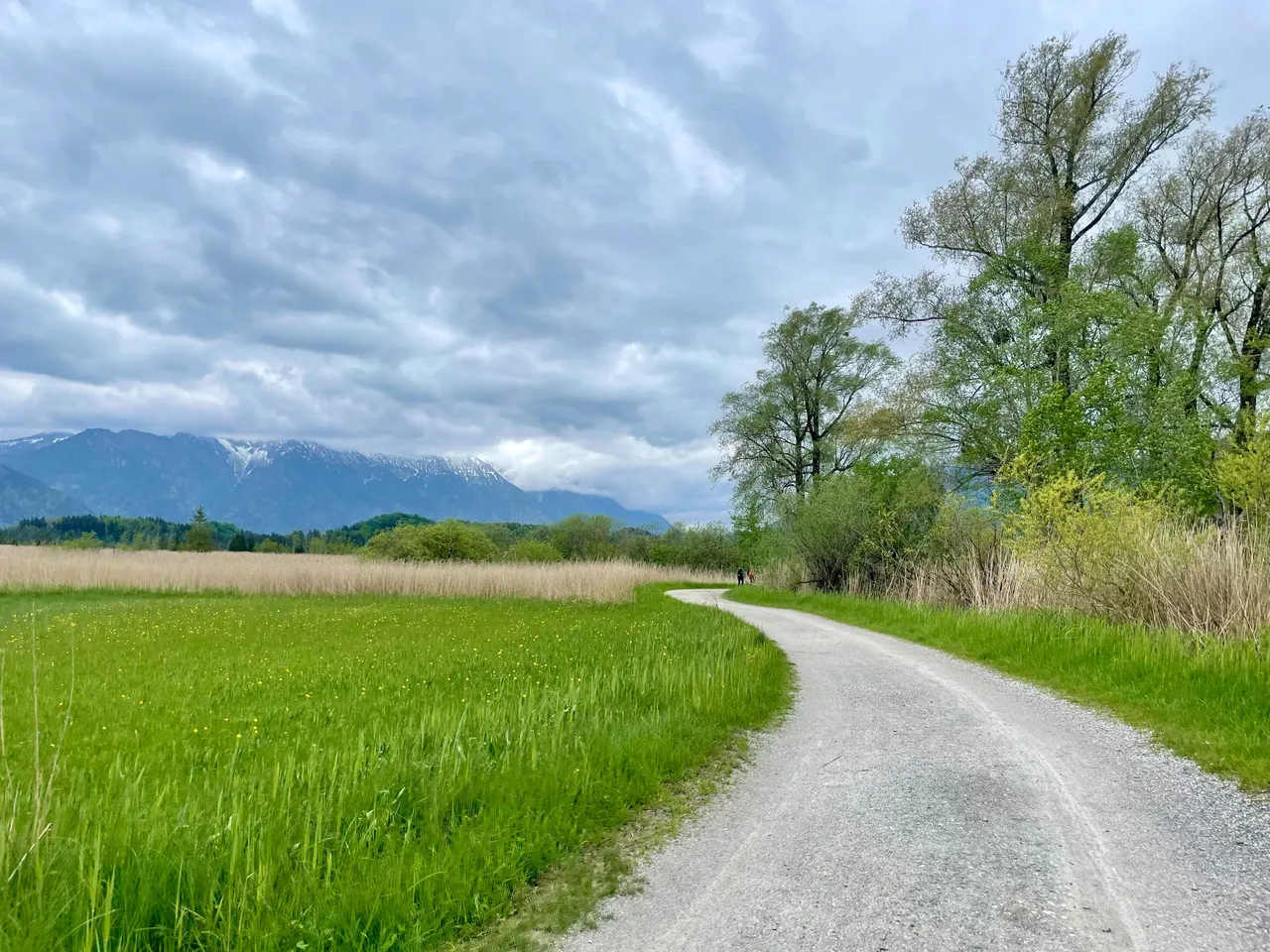
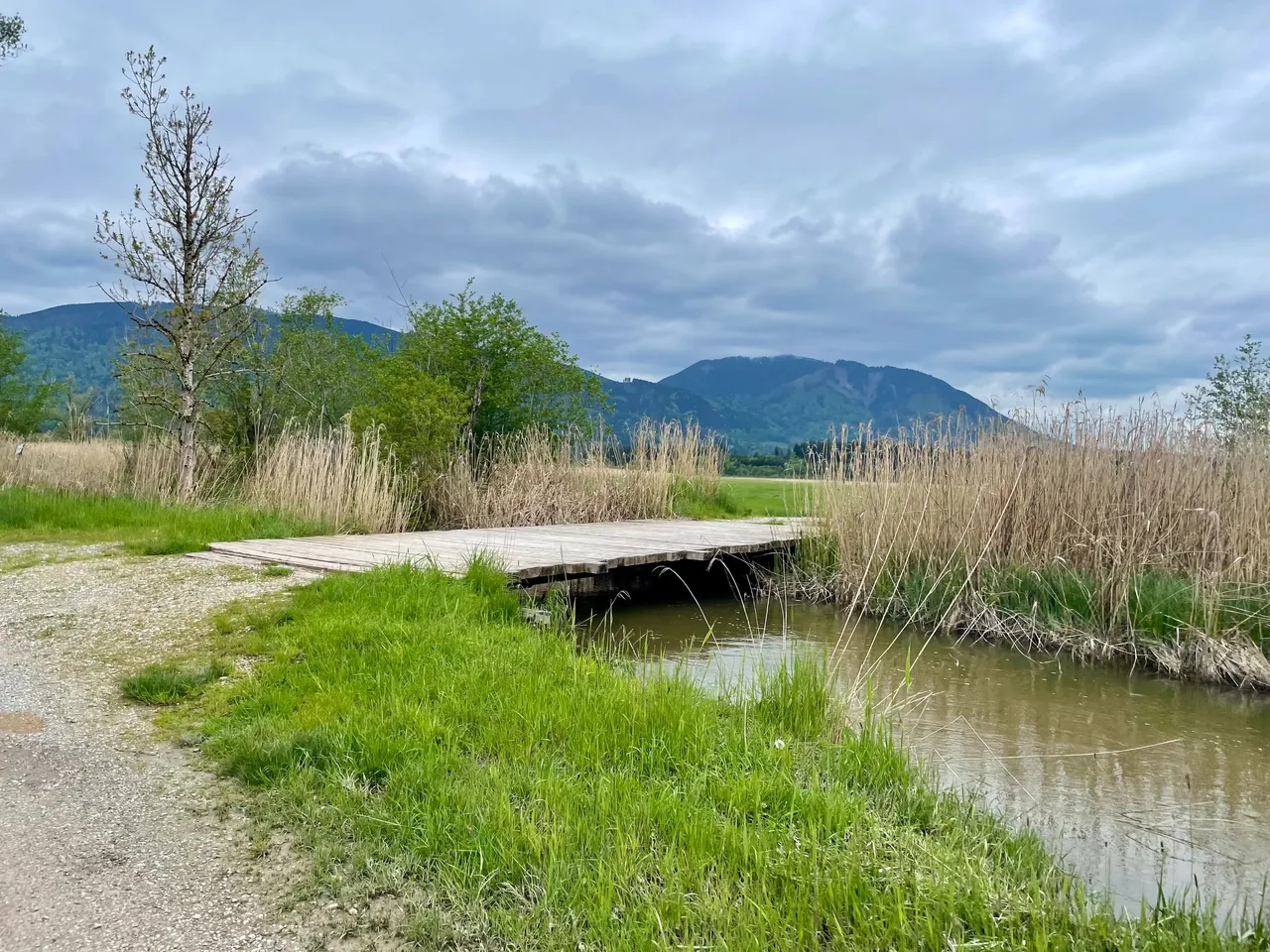
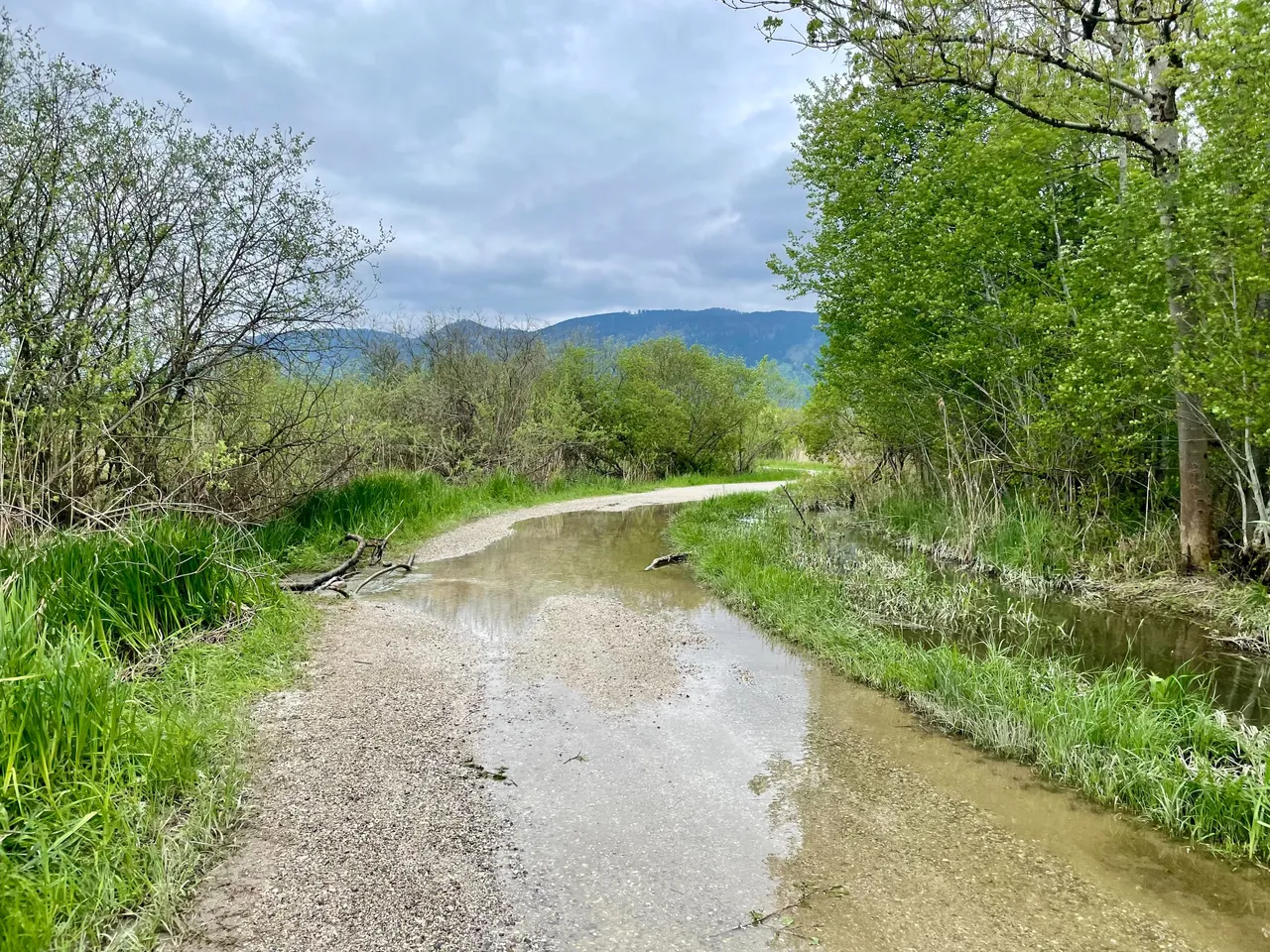
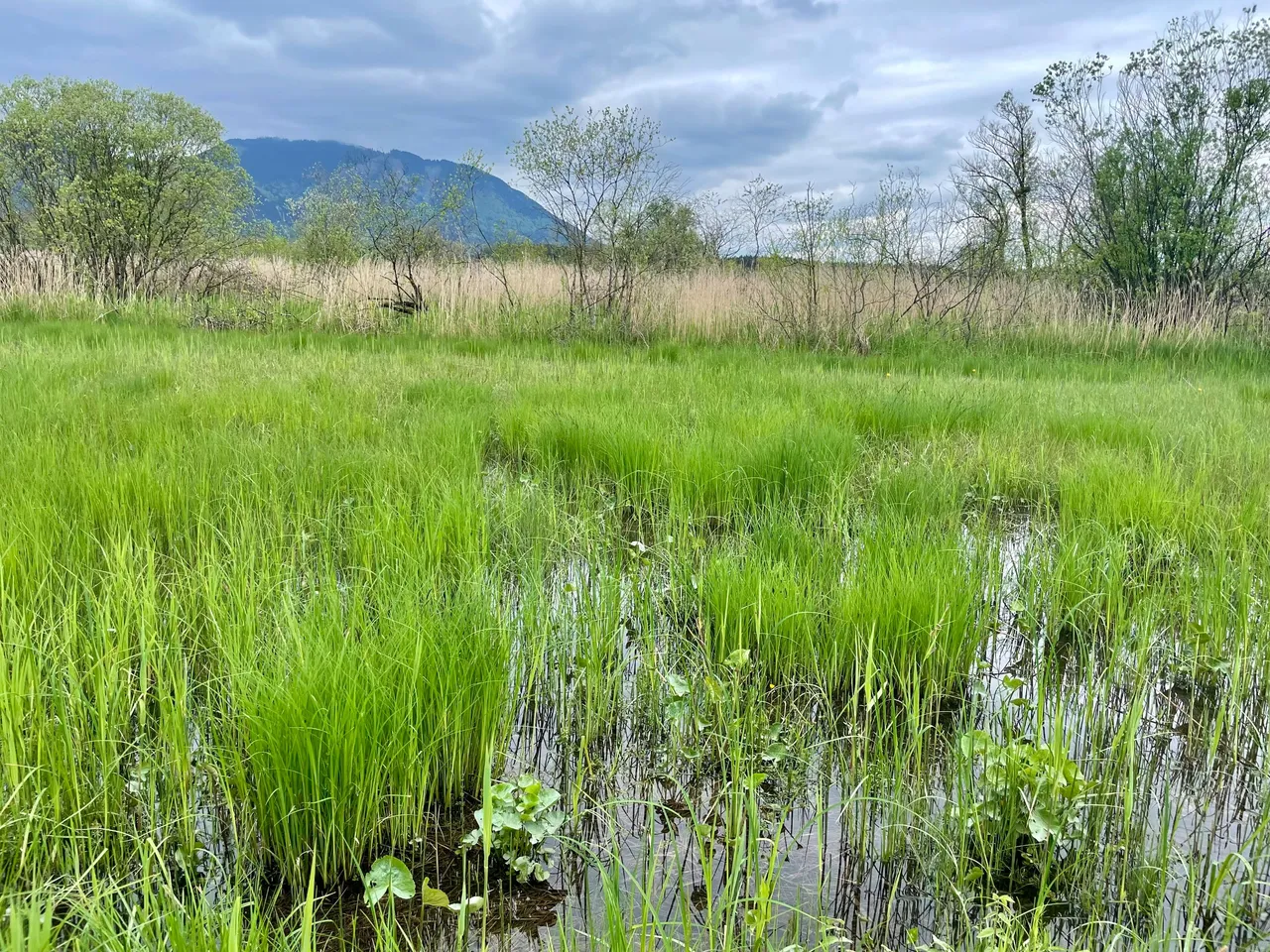

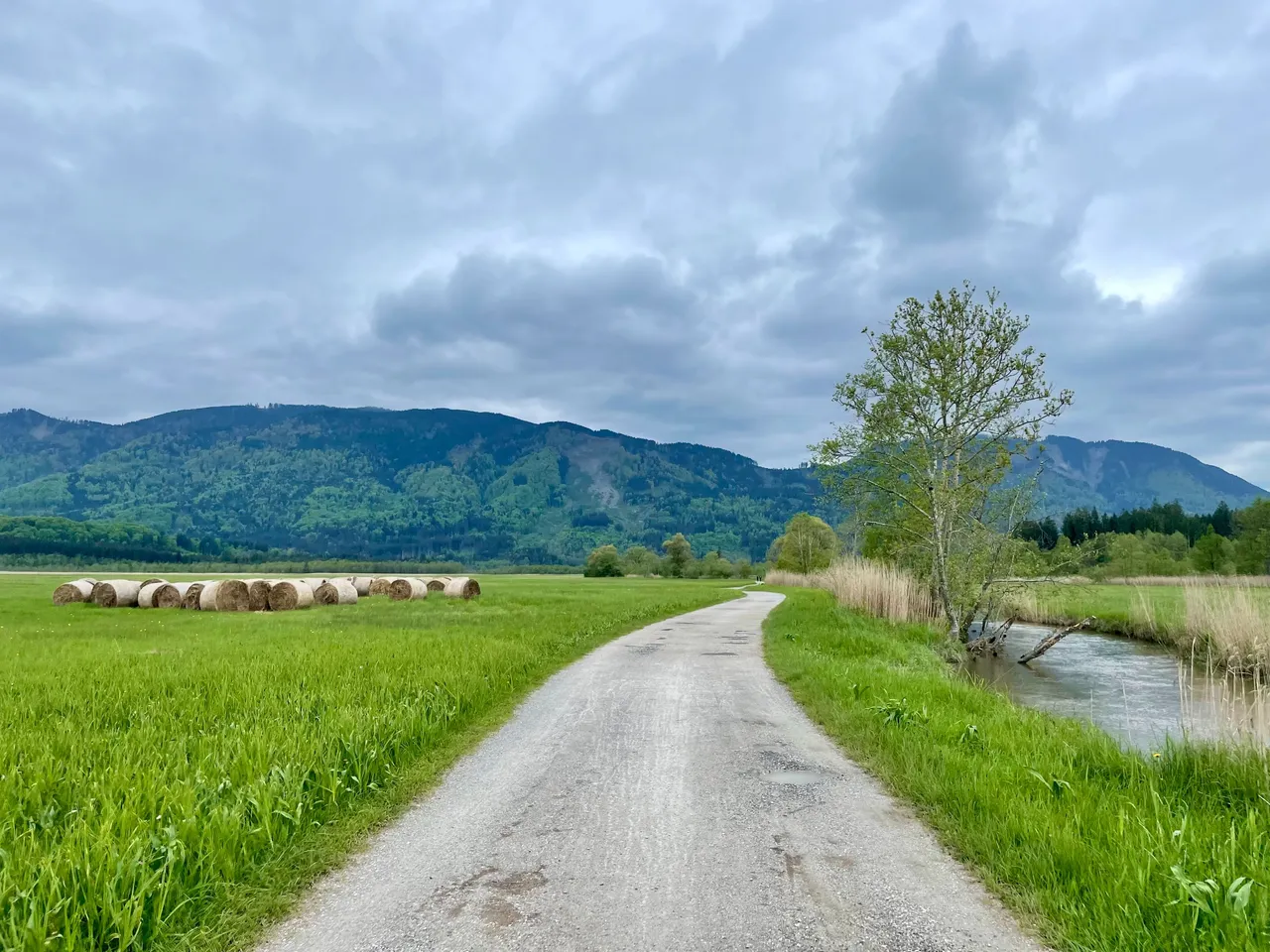
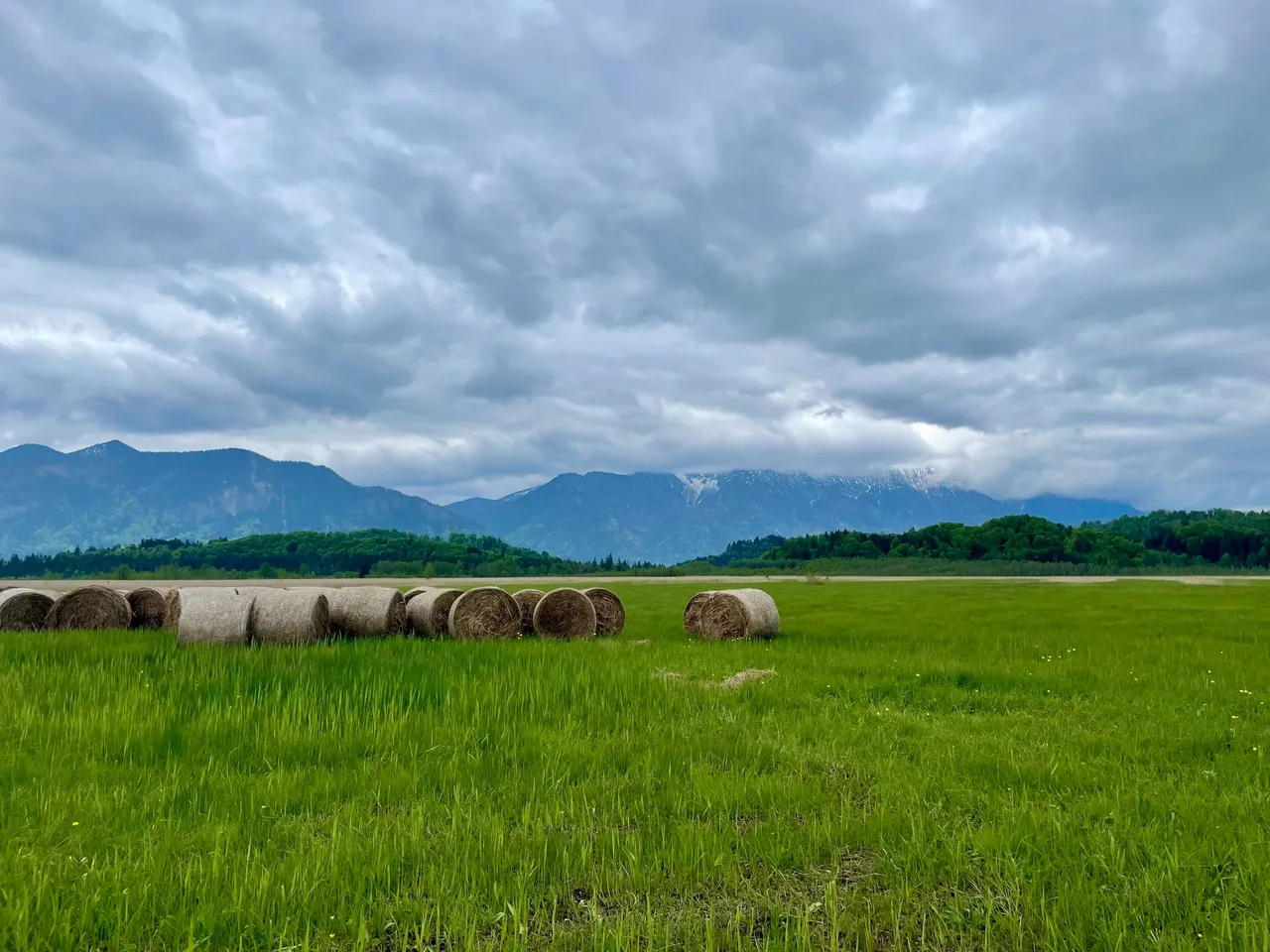
The Murnauer Moos is a true pearl of nature with Moors, wet meadows, and a very unique flora and fauna. Many animal and plant species threatened with extinction actually find refuge here.
Whether great gray shrike, corncrake, or adder, whether carnivorous sundew, Siberian iris, bug orchid, or Charlemagne, in the Murnauer Moos - the largest contiguous and largely original moorland area in Central Europe, there is still a great wealth of plant and animal species that have not been found elsewhere.
I can just confirm, that the best way to discover this natural area is to hike through the middle of the Murnauer Moos. So we followed the little river before branching off to the right into the forest. I was surprised when all of a sudden after a long time with wide view we were standing in the middle of trees. But even the ground in the forest was covered by wetlands.
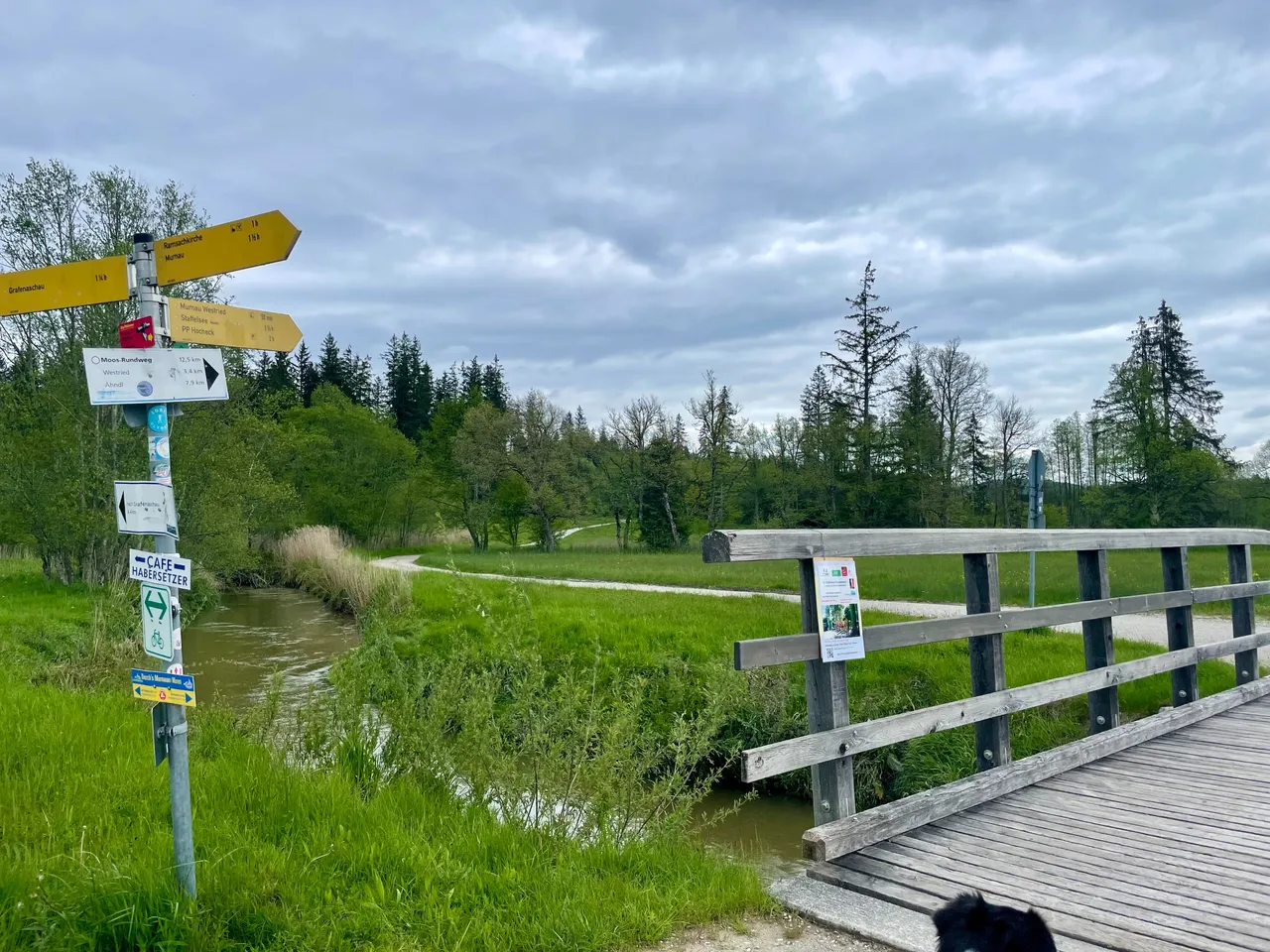



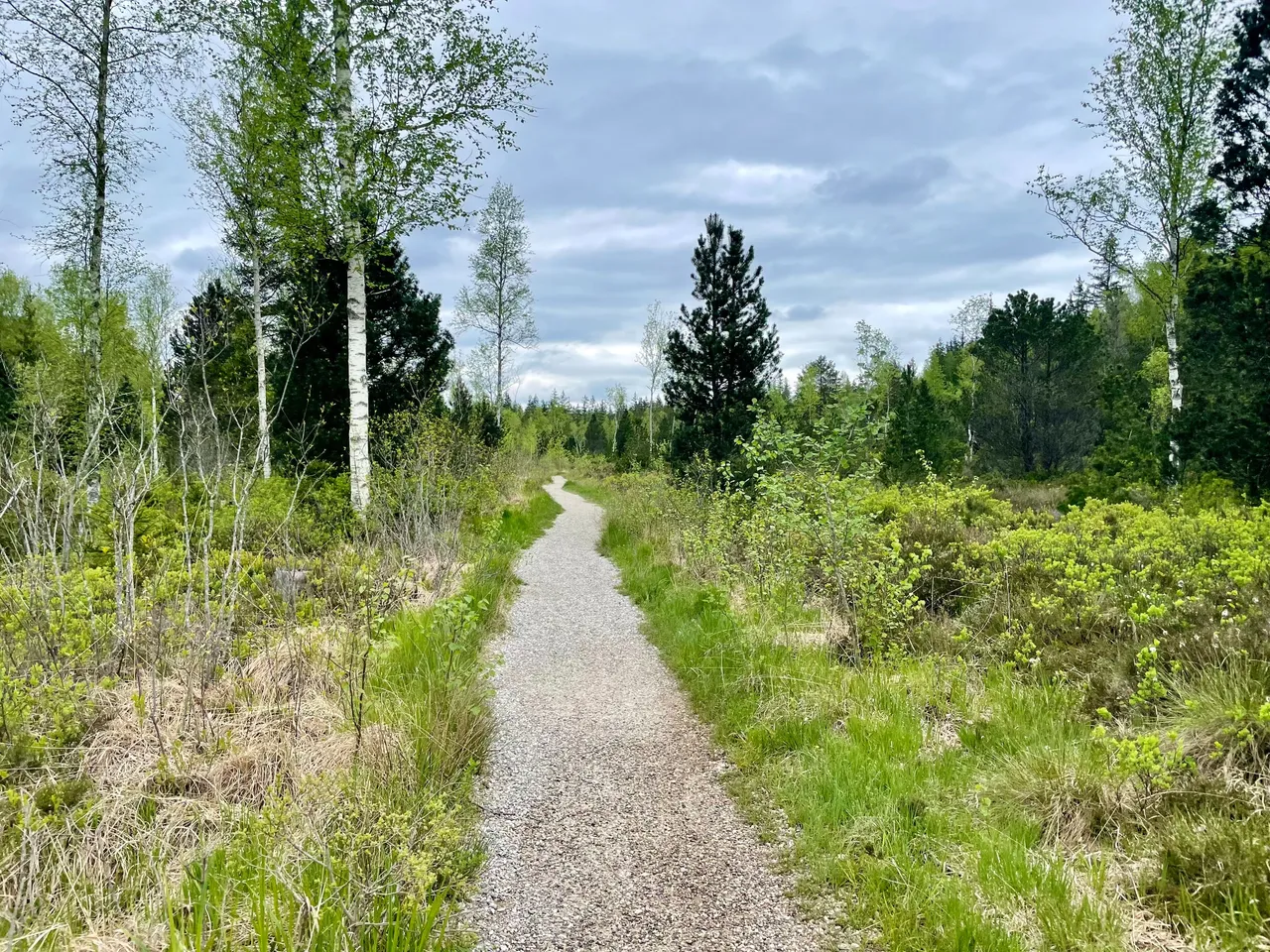
From there we entered a special highlight on the circular route: The boardwalk! Here, wooden planks cross the natural moor landscape. Walking it we had a wonderful view of the surrounding mountains, flora and fauna. The Bohlenweg was designed as a so-called moor nature trail and therefore offers even closer insights into the animal and plant world. - It felt like being a visitor in the wild!
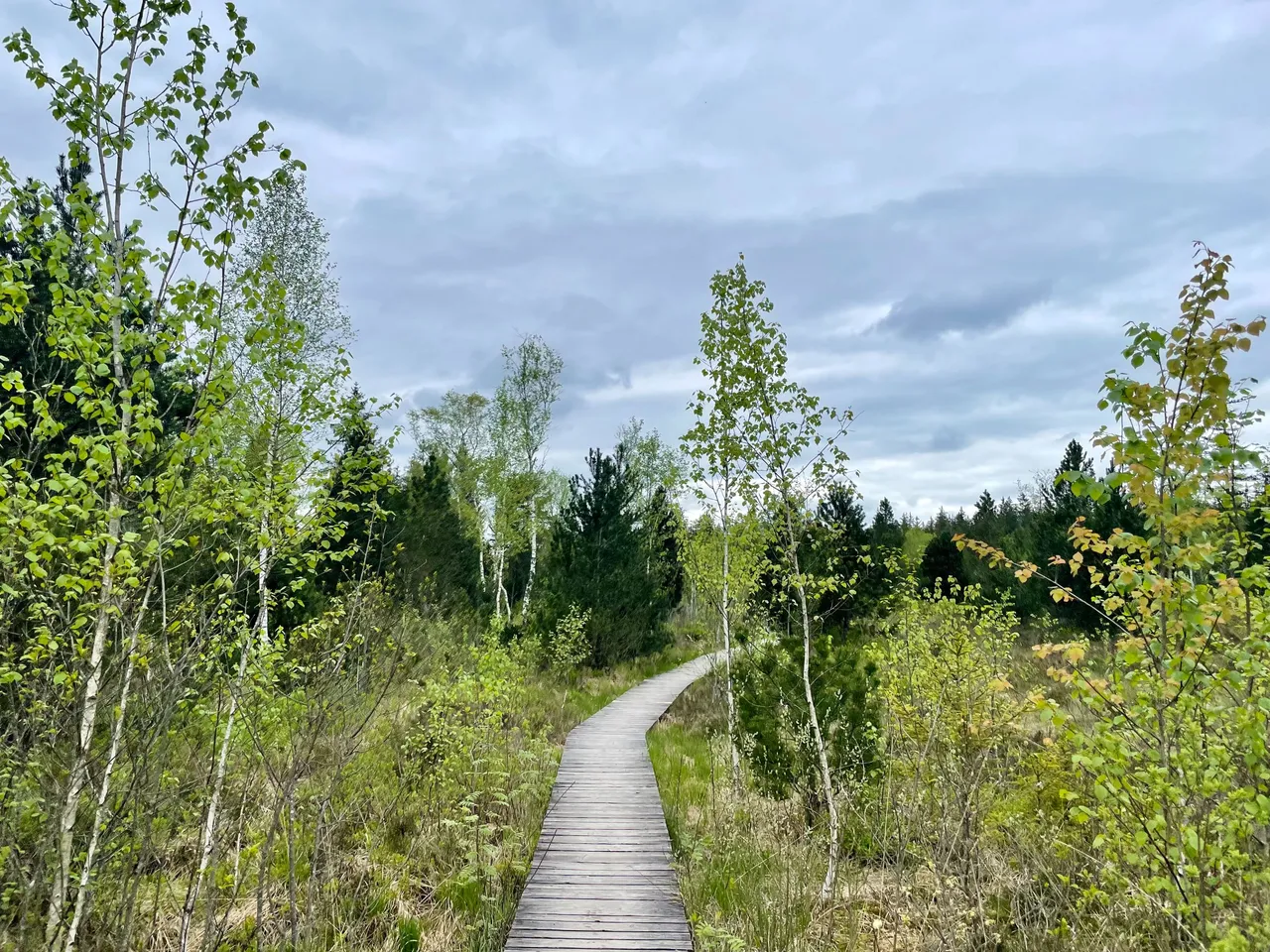
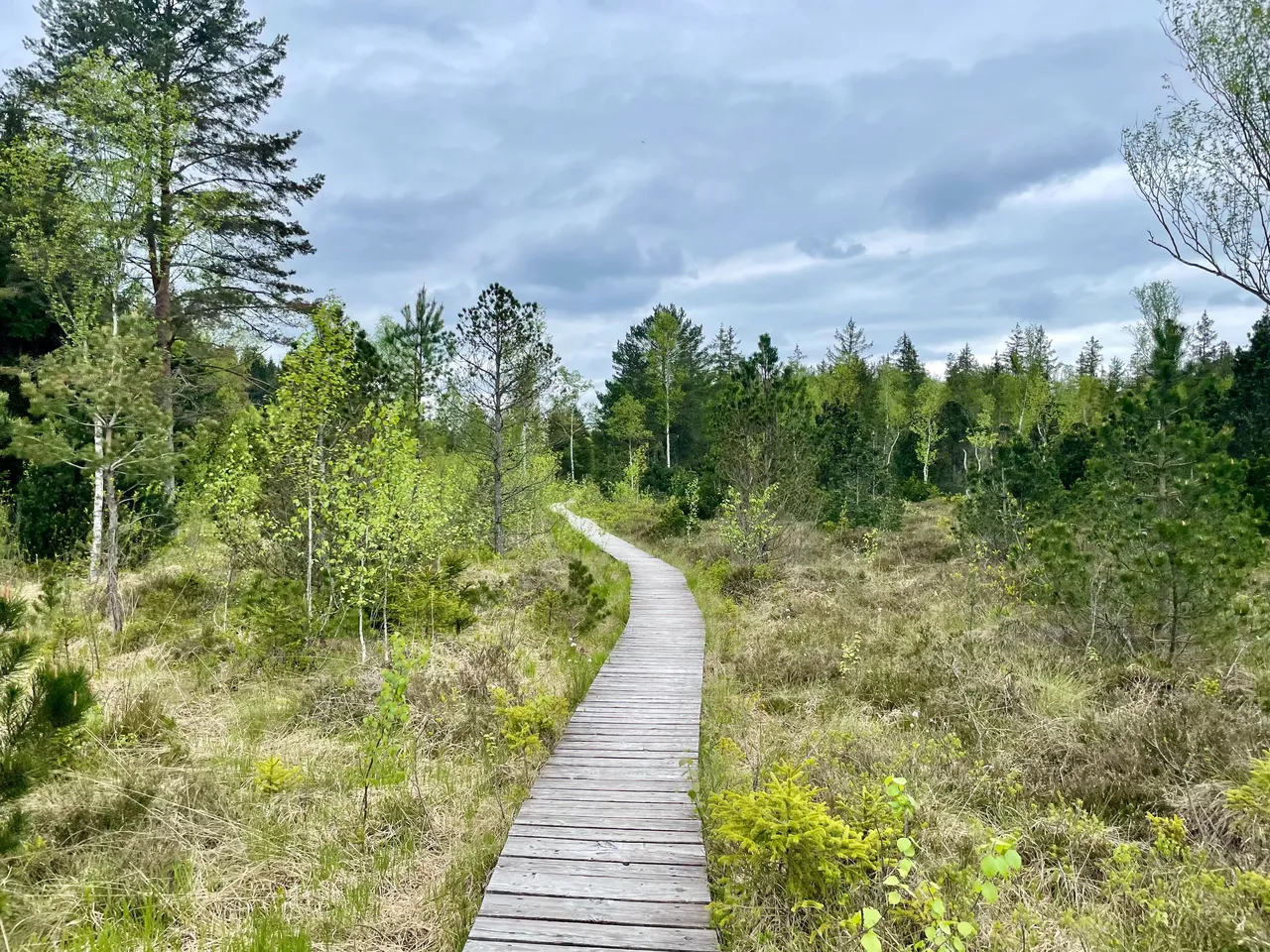
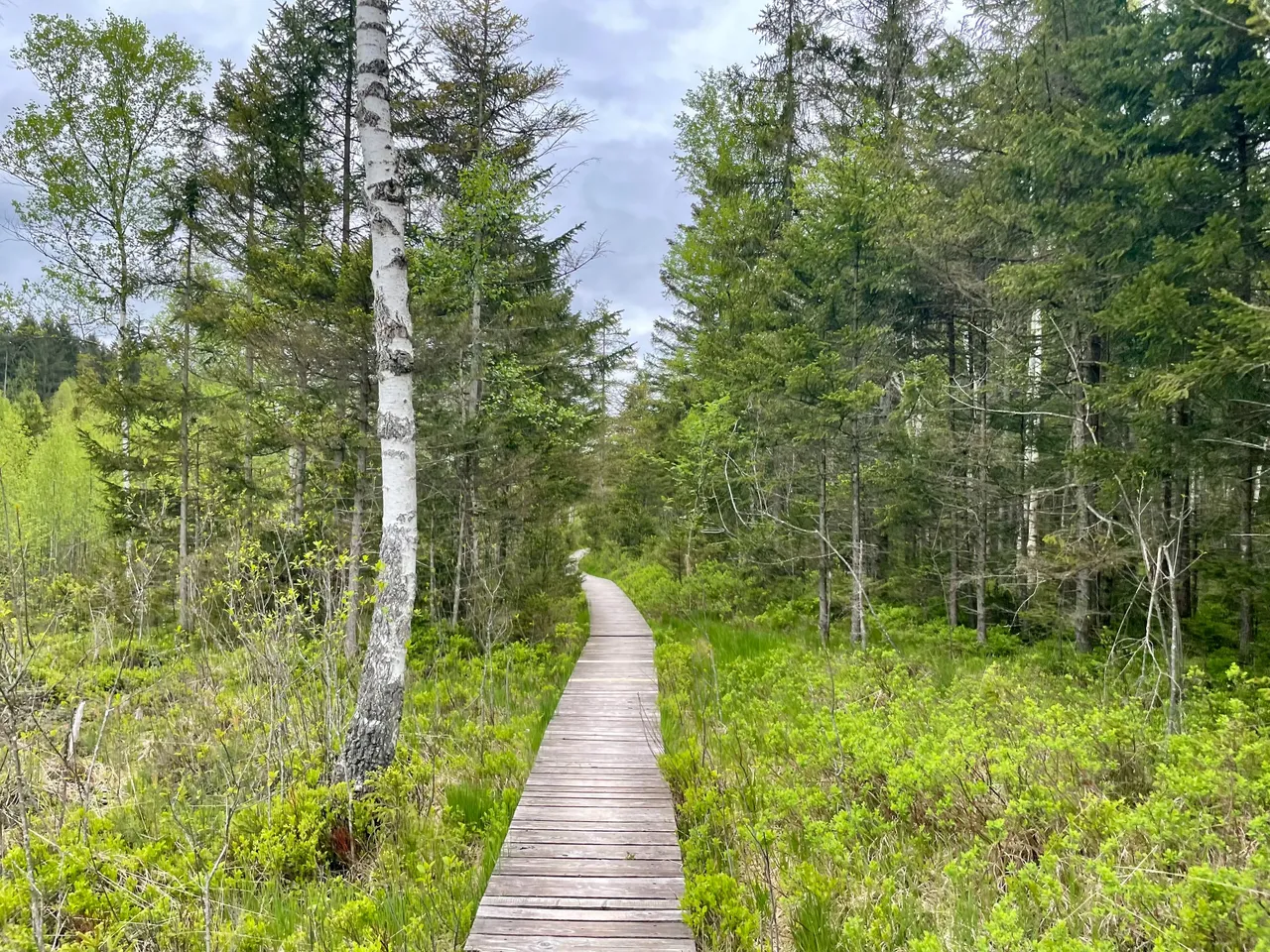

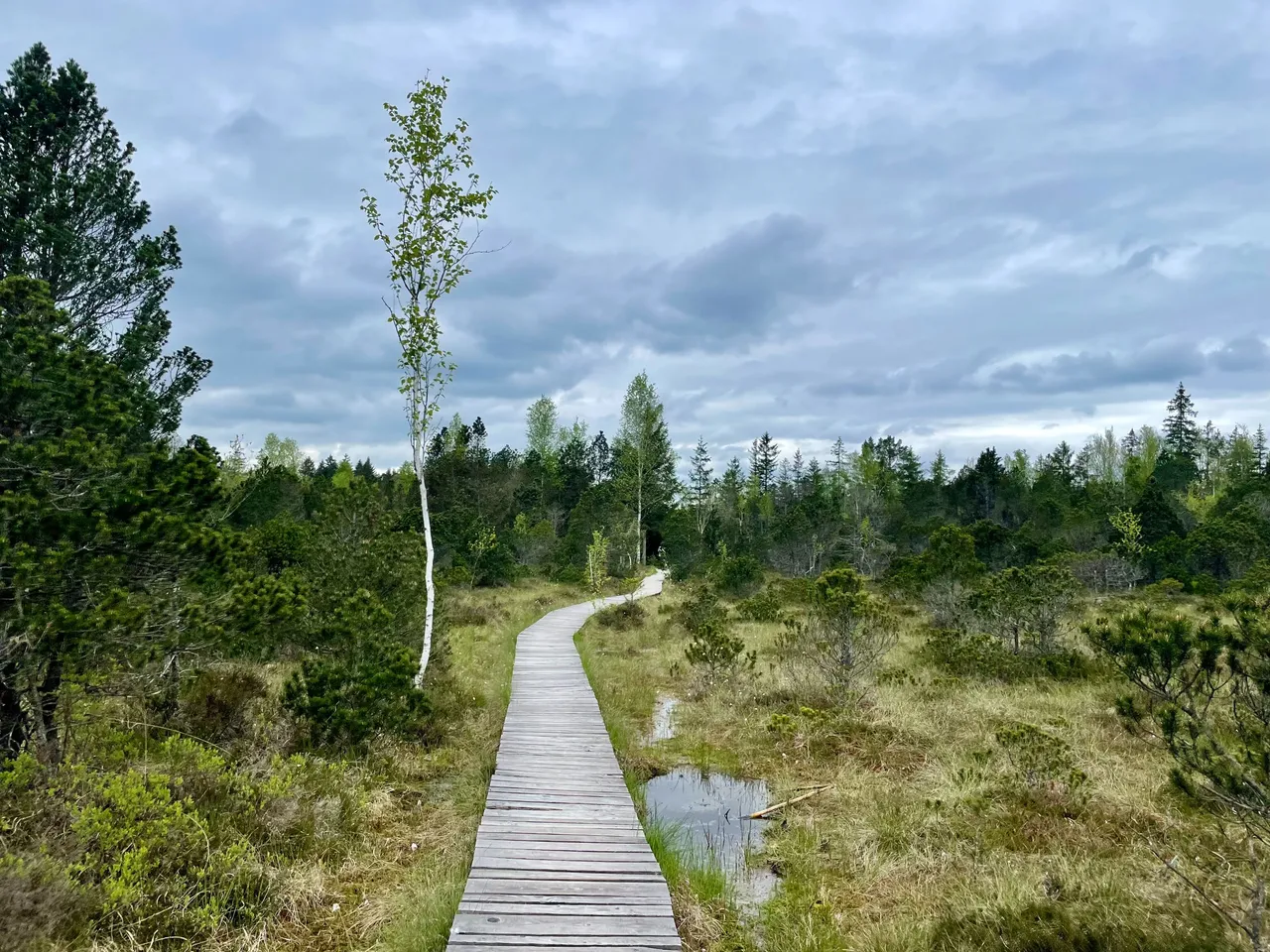
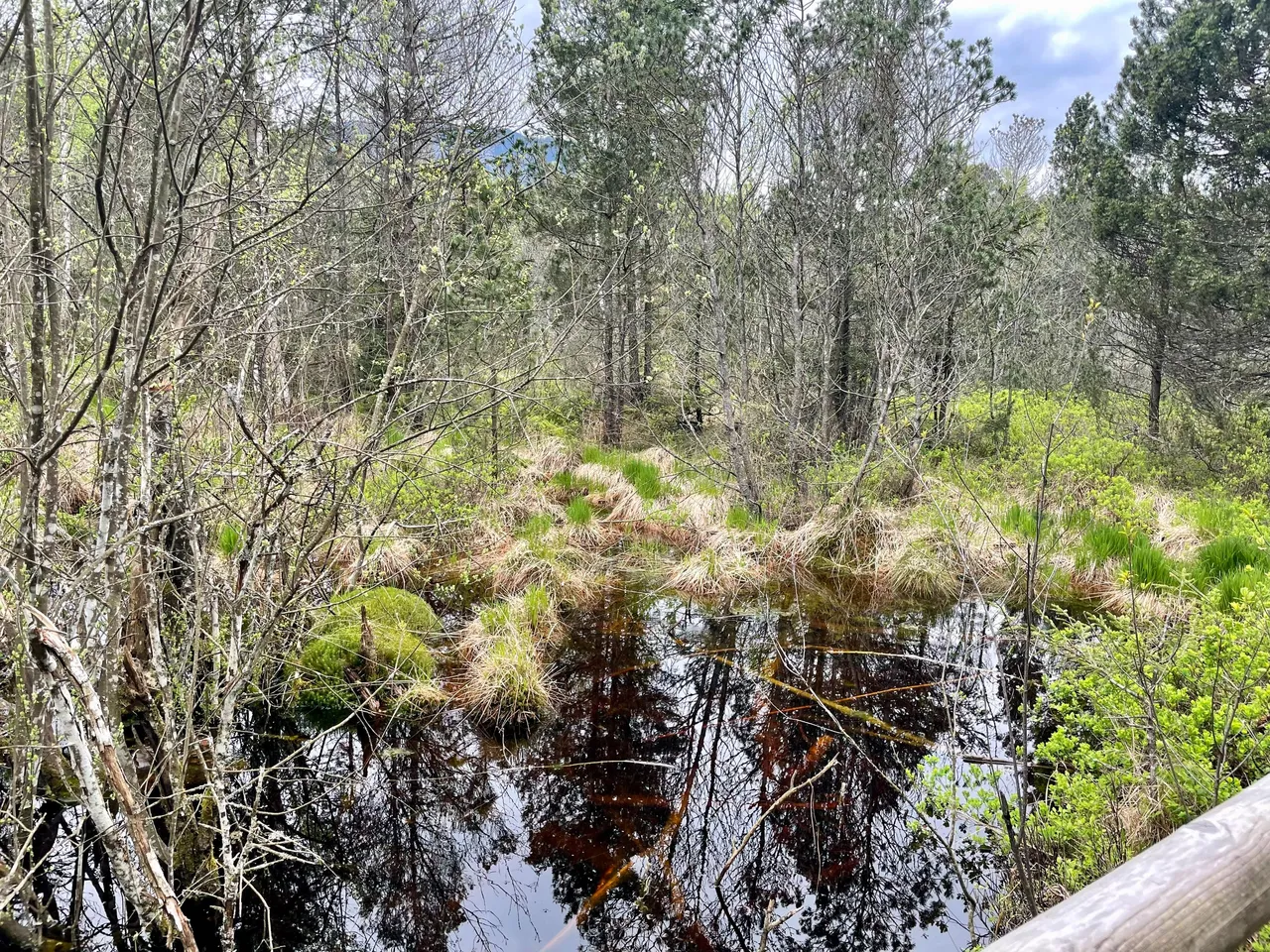

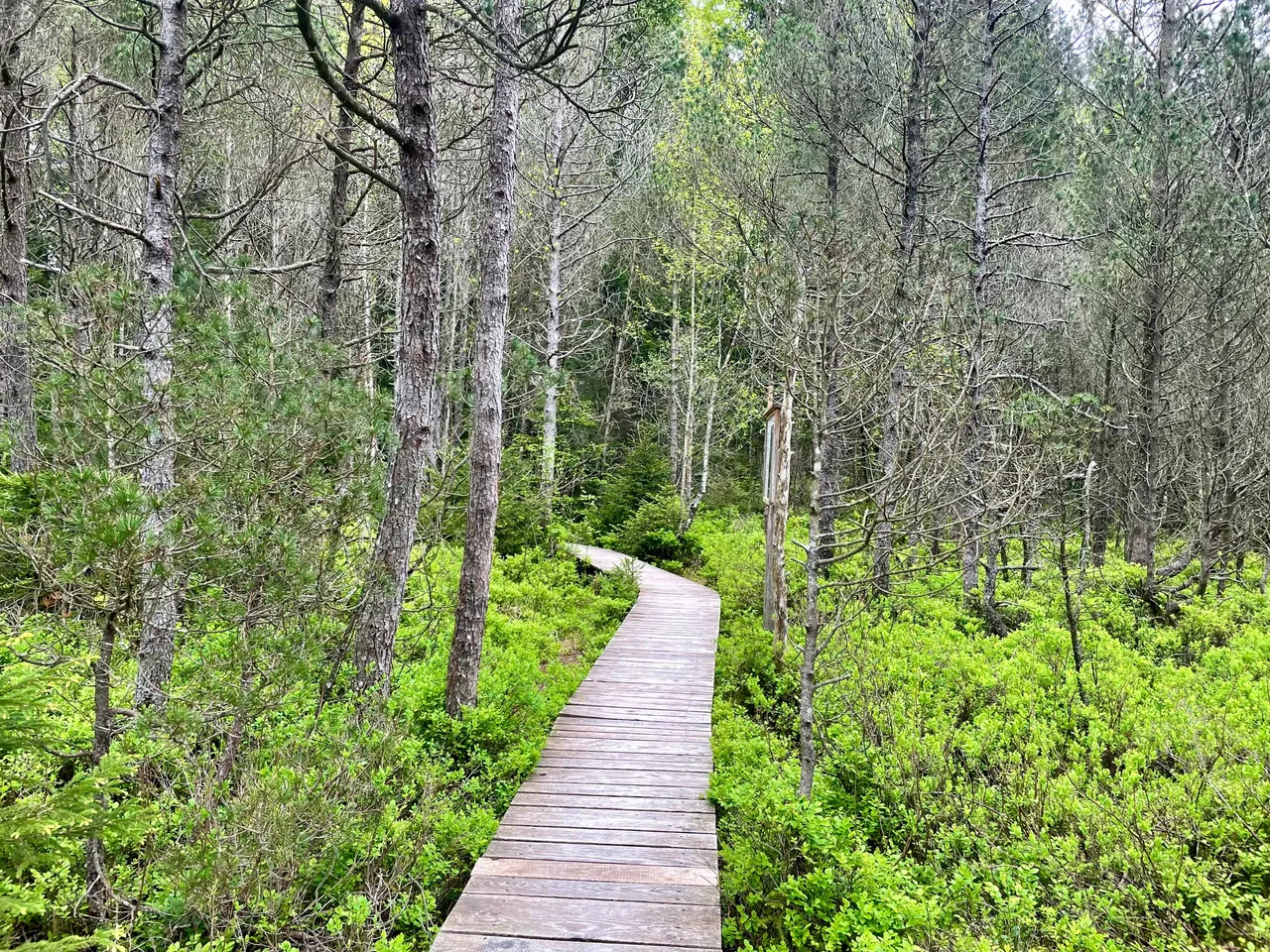
Information boards give a closer look at the animal and plant world in the middle of the moss.
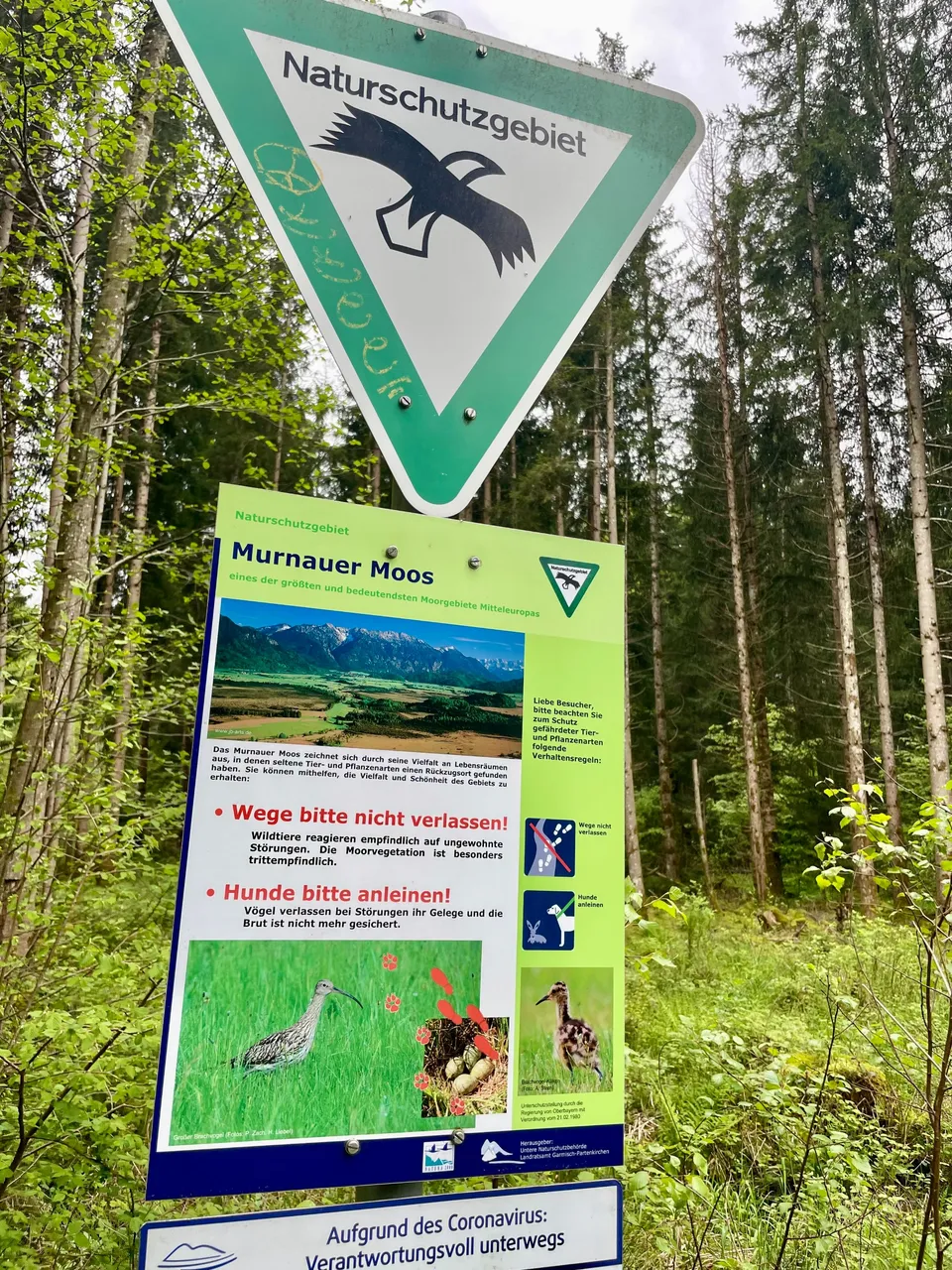

Here it says: Murnau moss
Handed down:
Framed by the Heimgarten and the Ester Mountains in the east, the Wetterstein Mountains in the south and the Ammergau Mountains in the west, the largest contiguous Alpine edge moor in Central Europe spreads out before us.
When the huge Loisachtal glacier began to melt around 20,000 years ago and masses of water, ice, and debris pushed north, they carved a funnel up to 250m deep, in which a huge ice age lake was formed. This lake is now covered by a more or less thick layer of the moor, which has formed over the millennia as a result of dying plant remains. The edge areas of this low moor consist of raised and transitional moors. Since 1980, 2355 ha of the approximately 4200 ha large moor count to nature protection areas.
deepened:
This mineral-rich moor layer enables a very specific wealth of plants. Over 1000 species of flowering plants, ferns, and mosses thrive here. This corresponds to about a third of the flora native to Bavaria. There are occurrences of giant horsetail, sundew, cranberries and bog bilberries, wonderful orchids, gladioli, lilies, gentians, and much more.
Many birds and small animals still find a species-appropriate habitat in the Murnauer Moos. Rare ground-breeding birds such as curlew and snipe as well as corncrake live in the litter meadows with the largest population in Bavaria. In addition to many moor and meadow birds, birds of prey such as tree falcons and black kites breed in the moss and even bats can be observed here.
Internalized:
Suppose we understand that this moss is not just a piece of landscape, but also provides a habitat for countless animal and plant species threatened with extinction. In that case, we may realize how precious and worthy of protection this piece of nature is.
And we may ask ourselves how it is possible that for a long time, only a few courageous people worked to protect the Murnauer Moos. How careful and courageous am I when it comes to protecting and preserving precious and unique things?
Let us let the sentence of a lifelong very dedicated biologist living in Murnau resonate in our minds: "One must not slack off and accept that something is hopeless" - Dr. Ingeborg Haeckel, 1903-1994
After the boardwalk, the path continued in the forest for a short while.
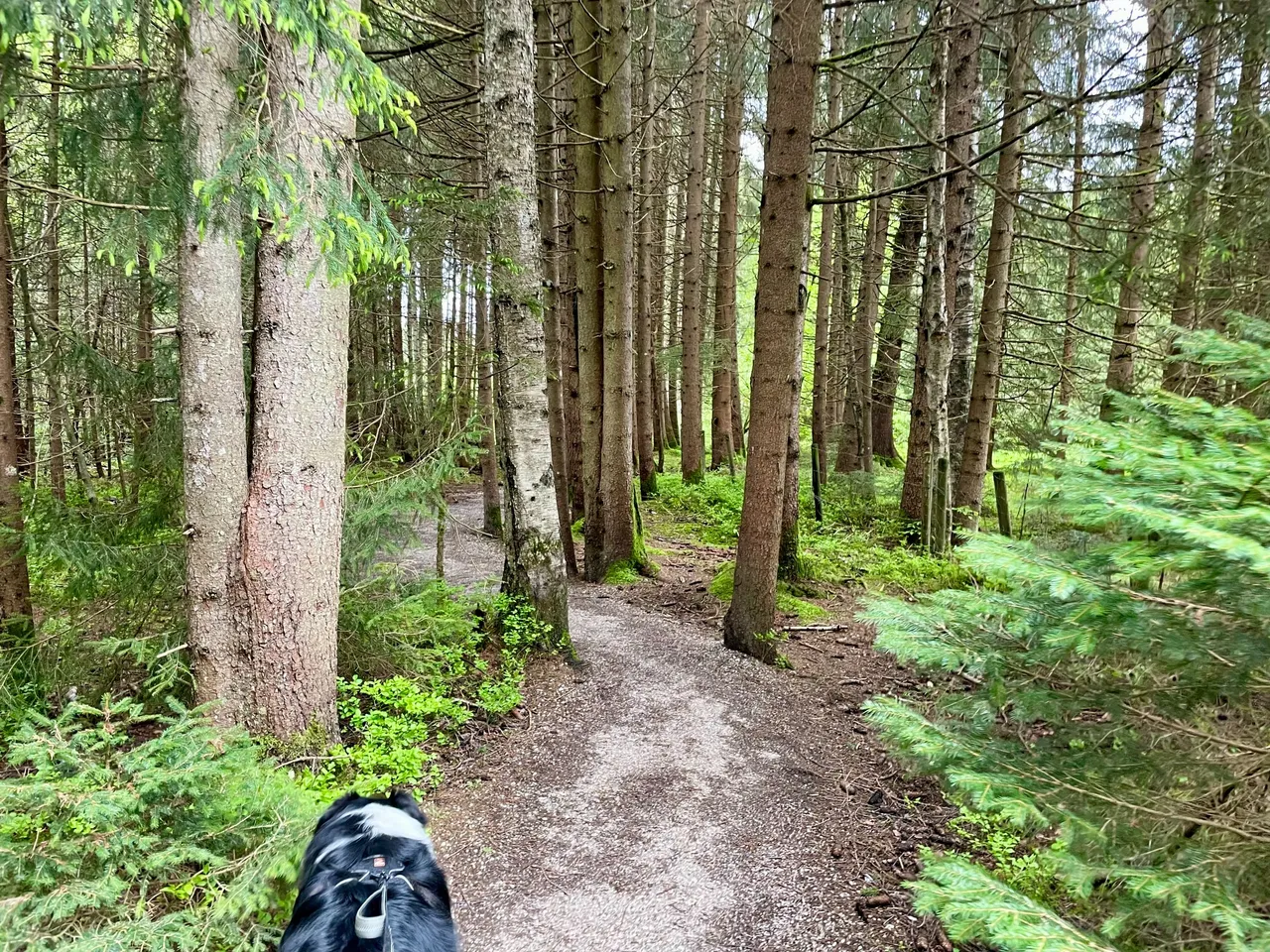
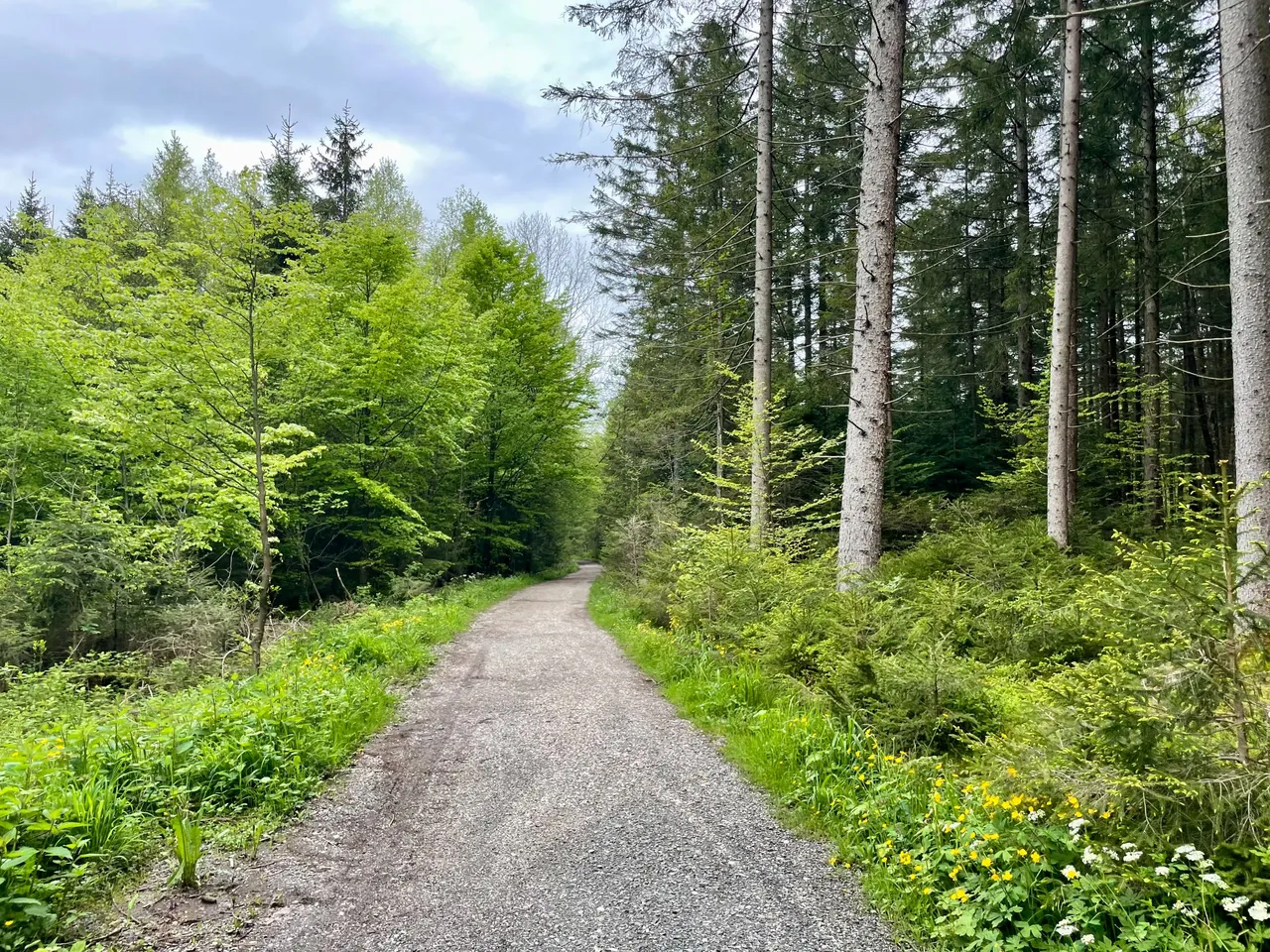

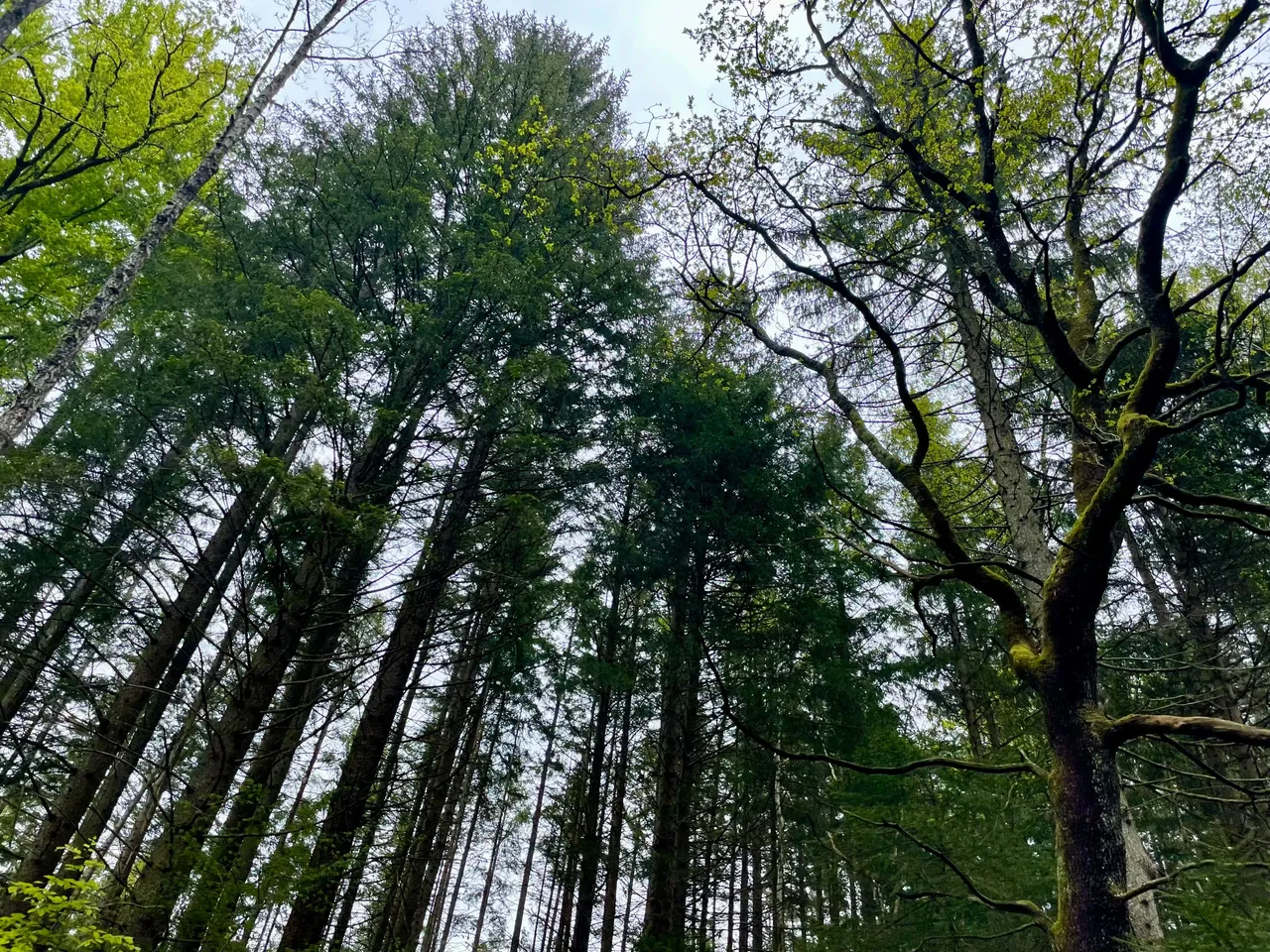
As you can imagine the protection of the foothills of the Alps was not always a matter of course. The rescue and the current protection status of the Murnauer Moos are due to one woman in particular, whose words you could already read on the sign: the "Mooshex" Ingeborg Haeckel. Together with her colleagues, the biologist and long-time head of today's Staffelsee High School created the conditions for today's nature reserve. And this commitment was worth it.
Leaving the forest we arrived at a little village located right next to the Murnauer Moor - Westried. Here we walked through the streets following the trail signs for about 15 minutes before we crossed another little forest area and found ourselves on top of the hill walking along Train tracks. Now we could see the area of the Murnauer Moos from uphill. As the weather was great, we could even see the Alps.
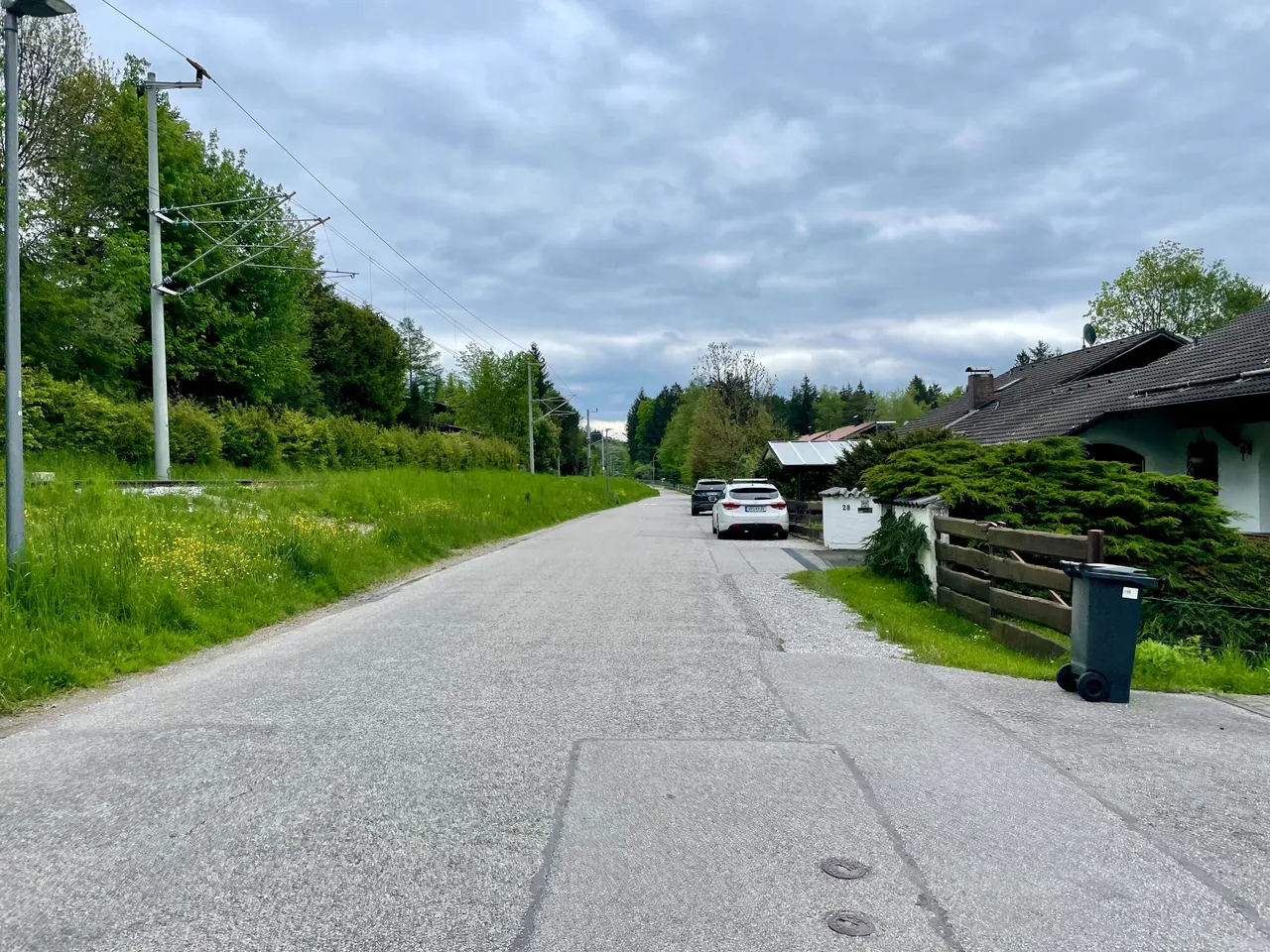
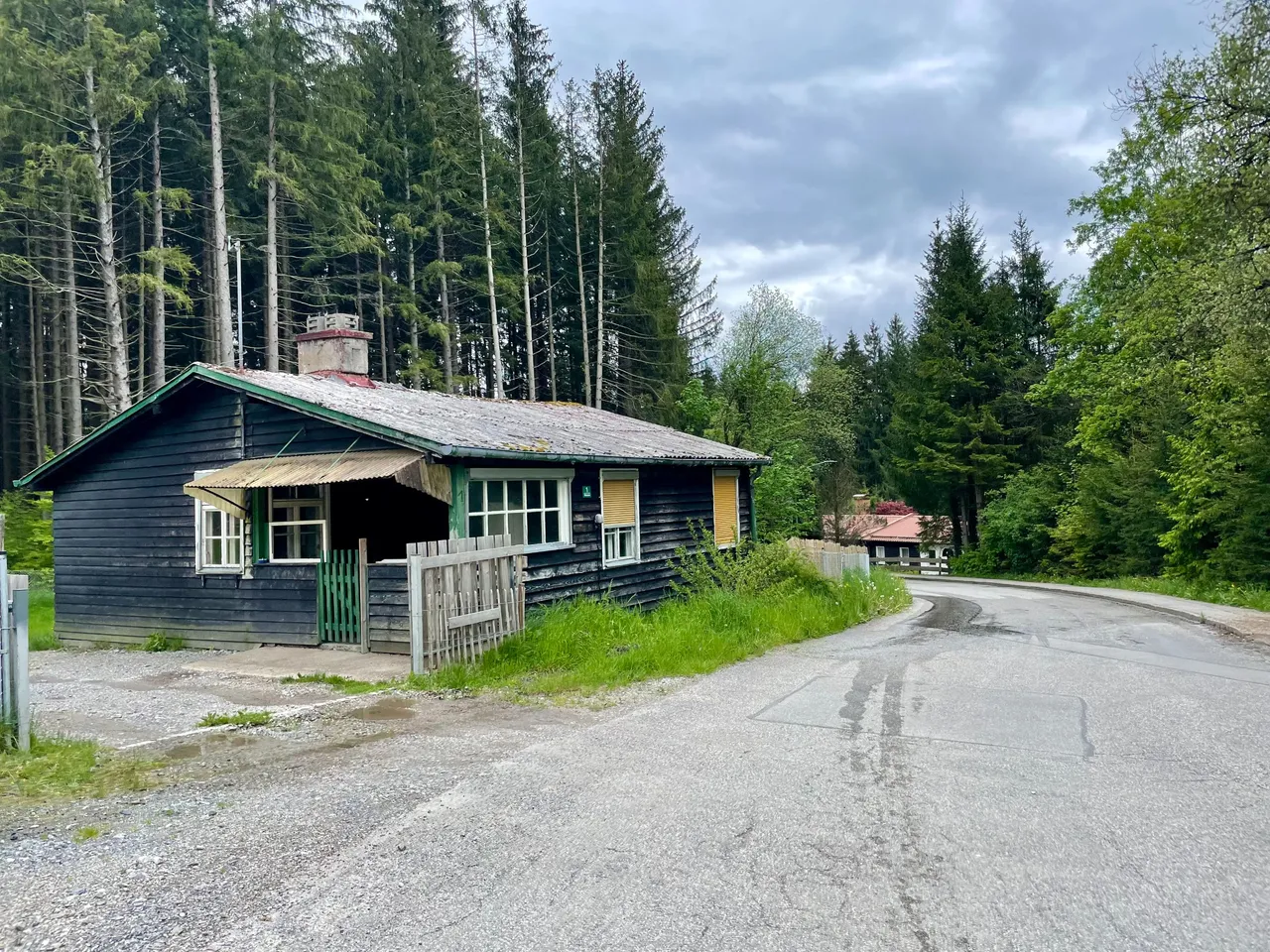
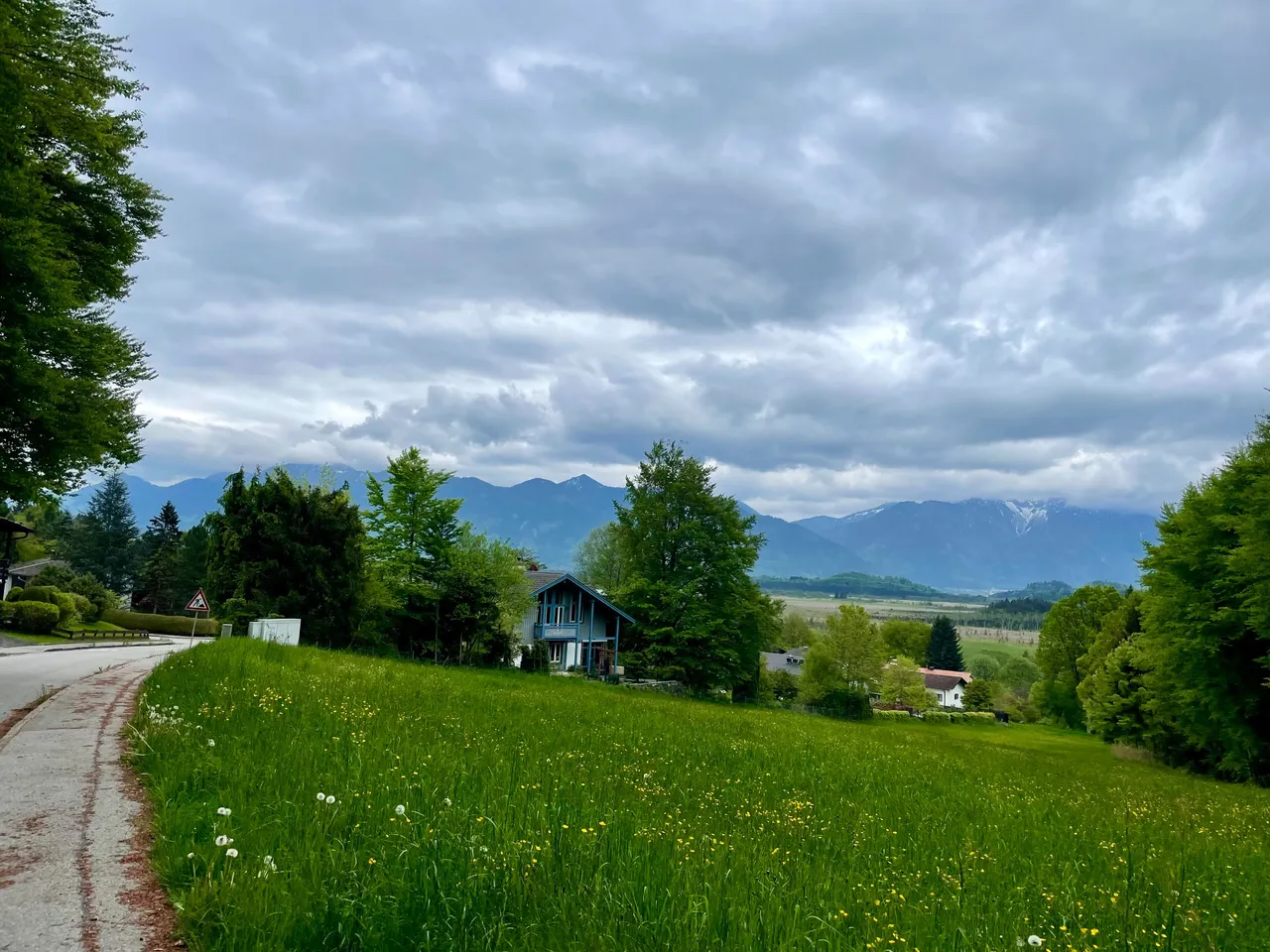

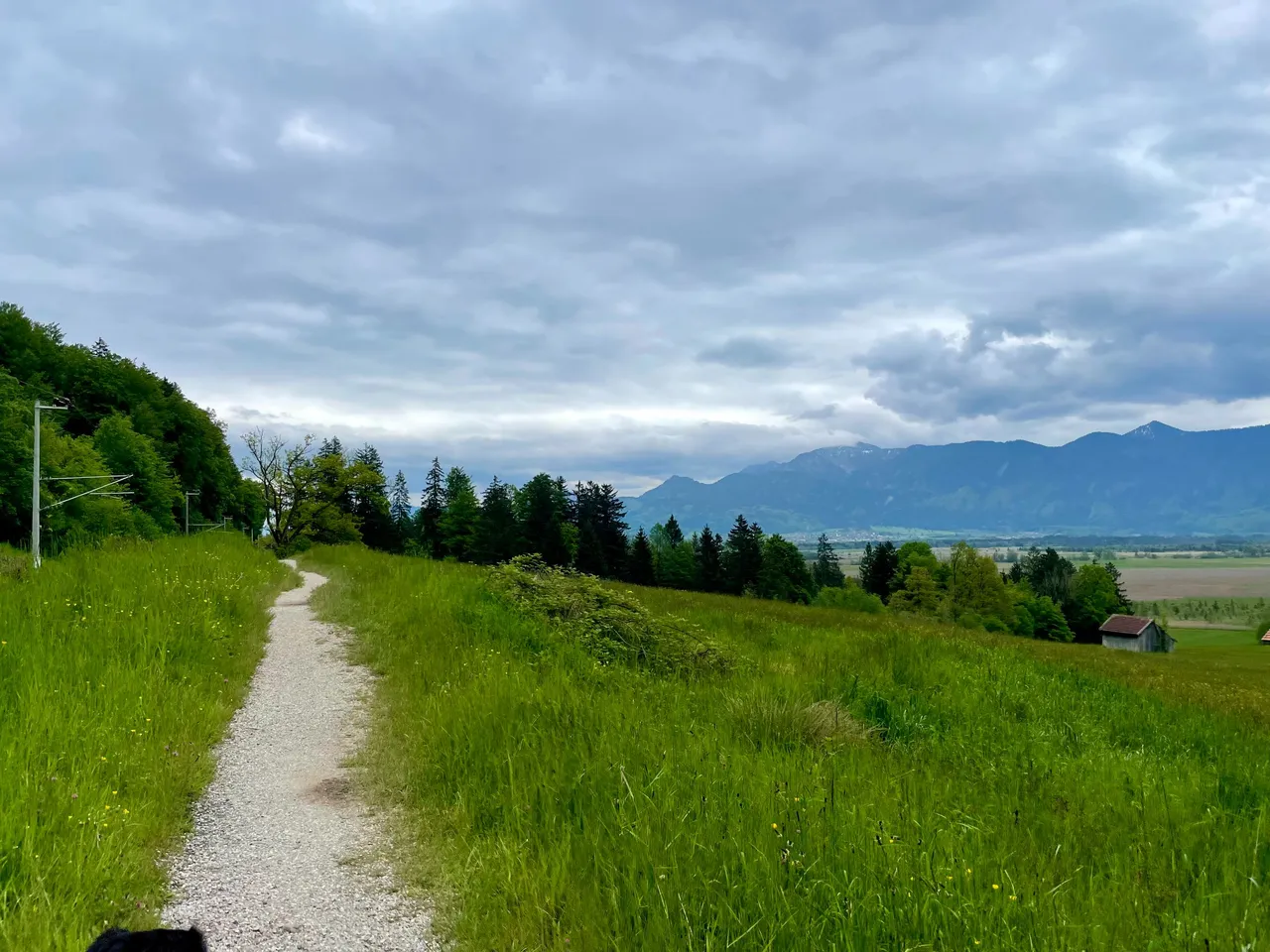
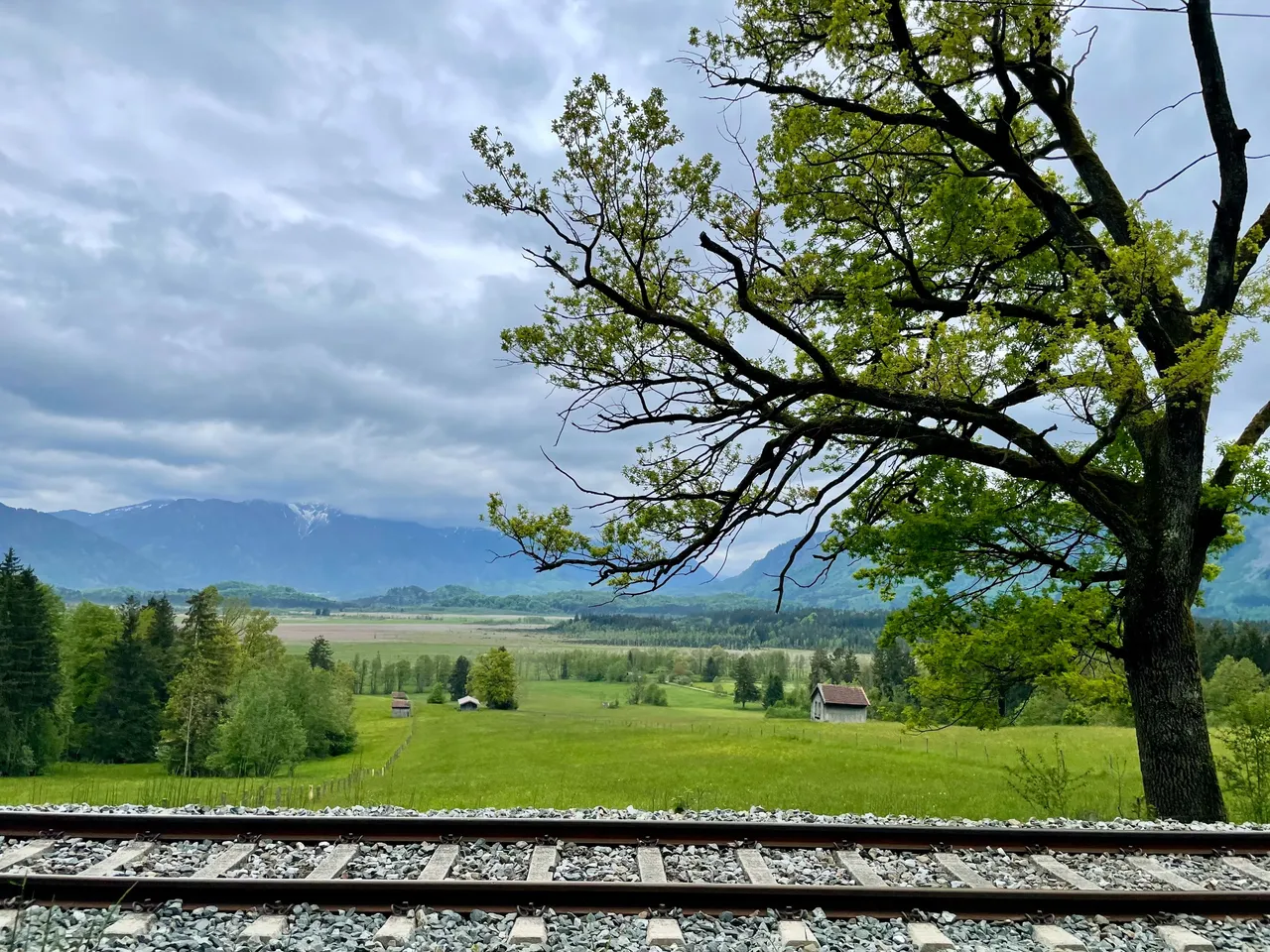
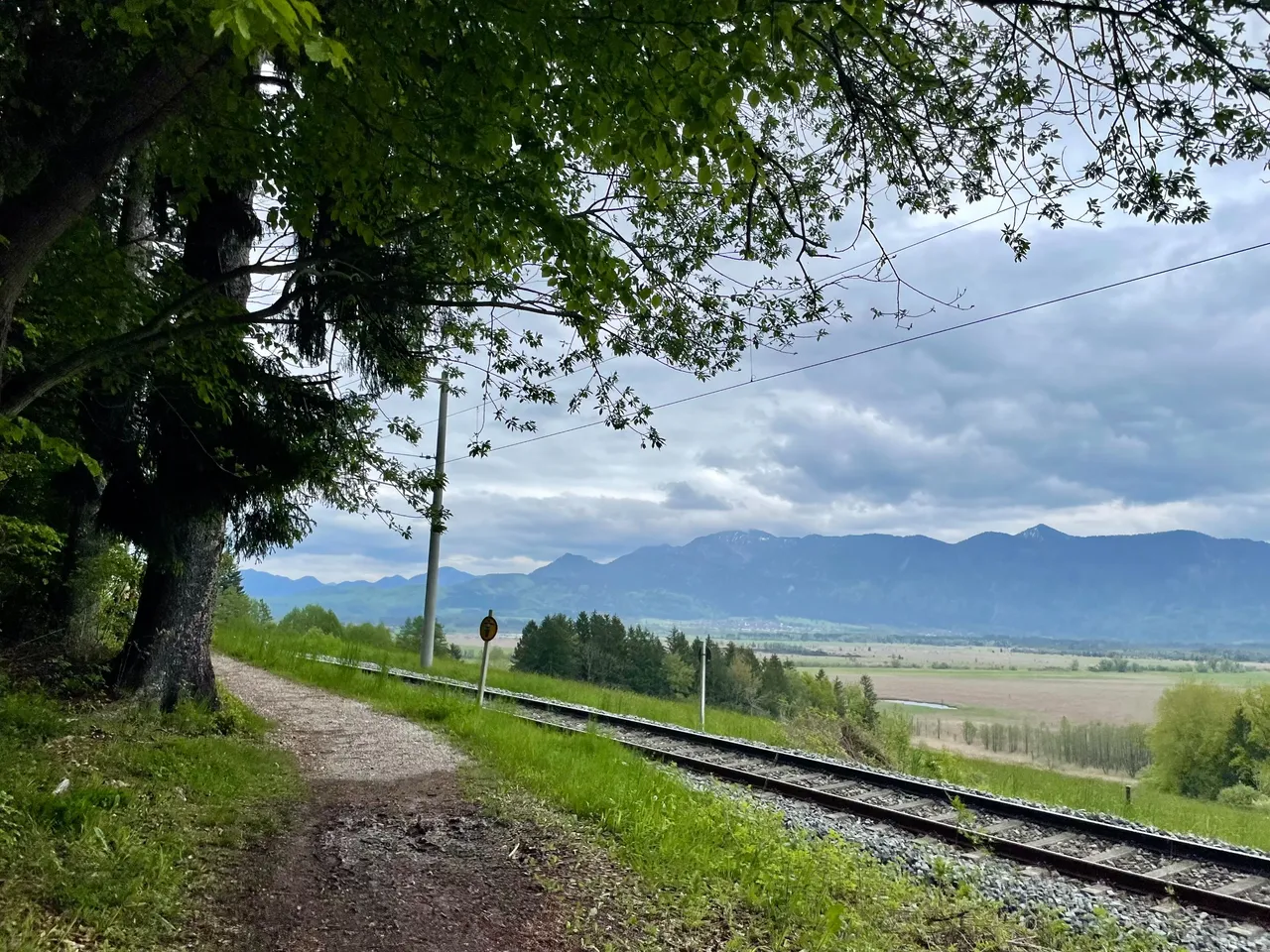
Crossing the train tracks we only had about 2,5km left until we reached our starting point. This last part at this beautiful ridge was my personal favorite, as the whole time we had such great views of the entire Moos and the Alps.
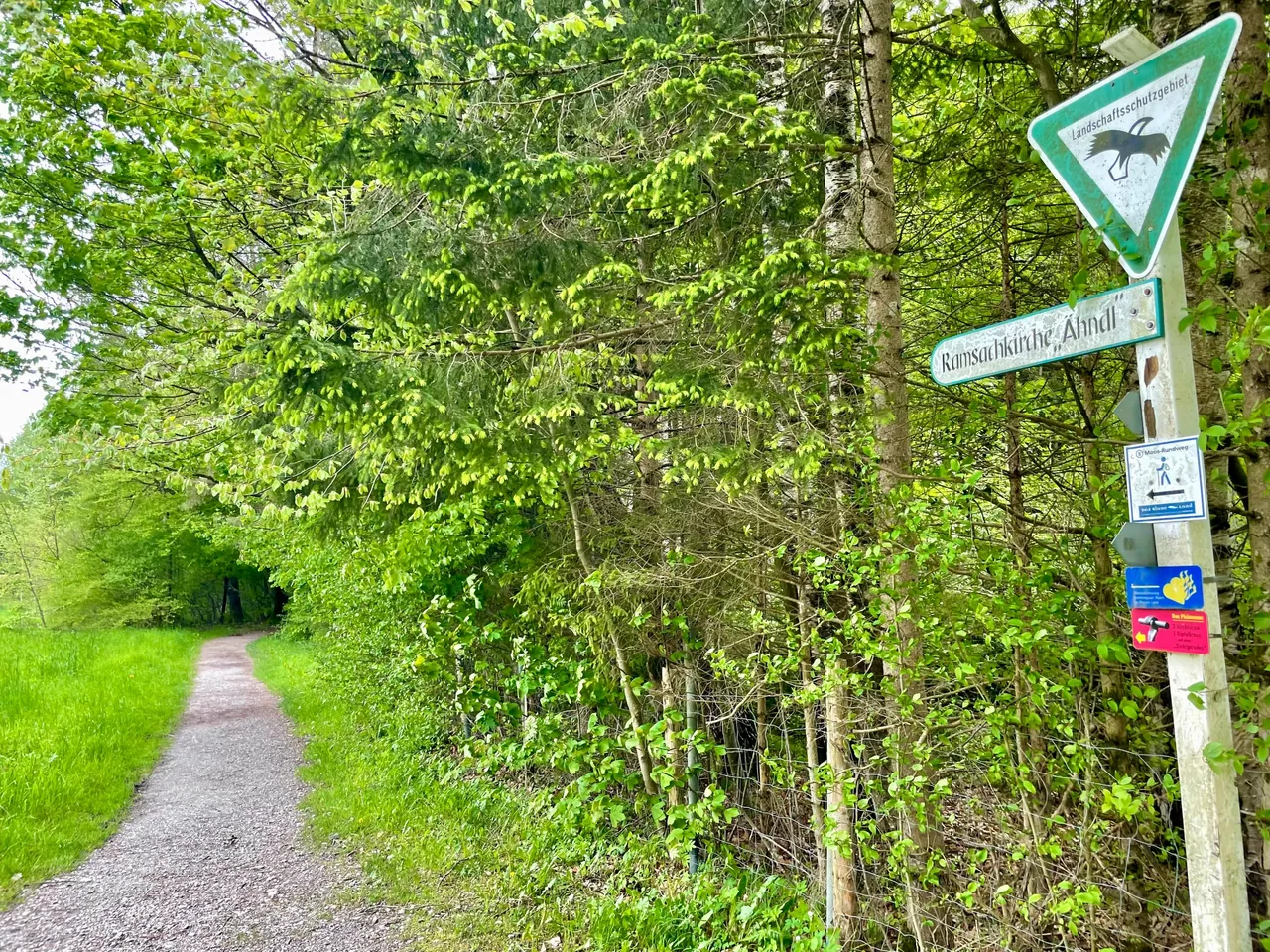
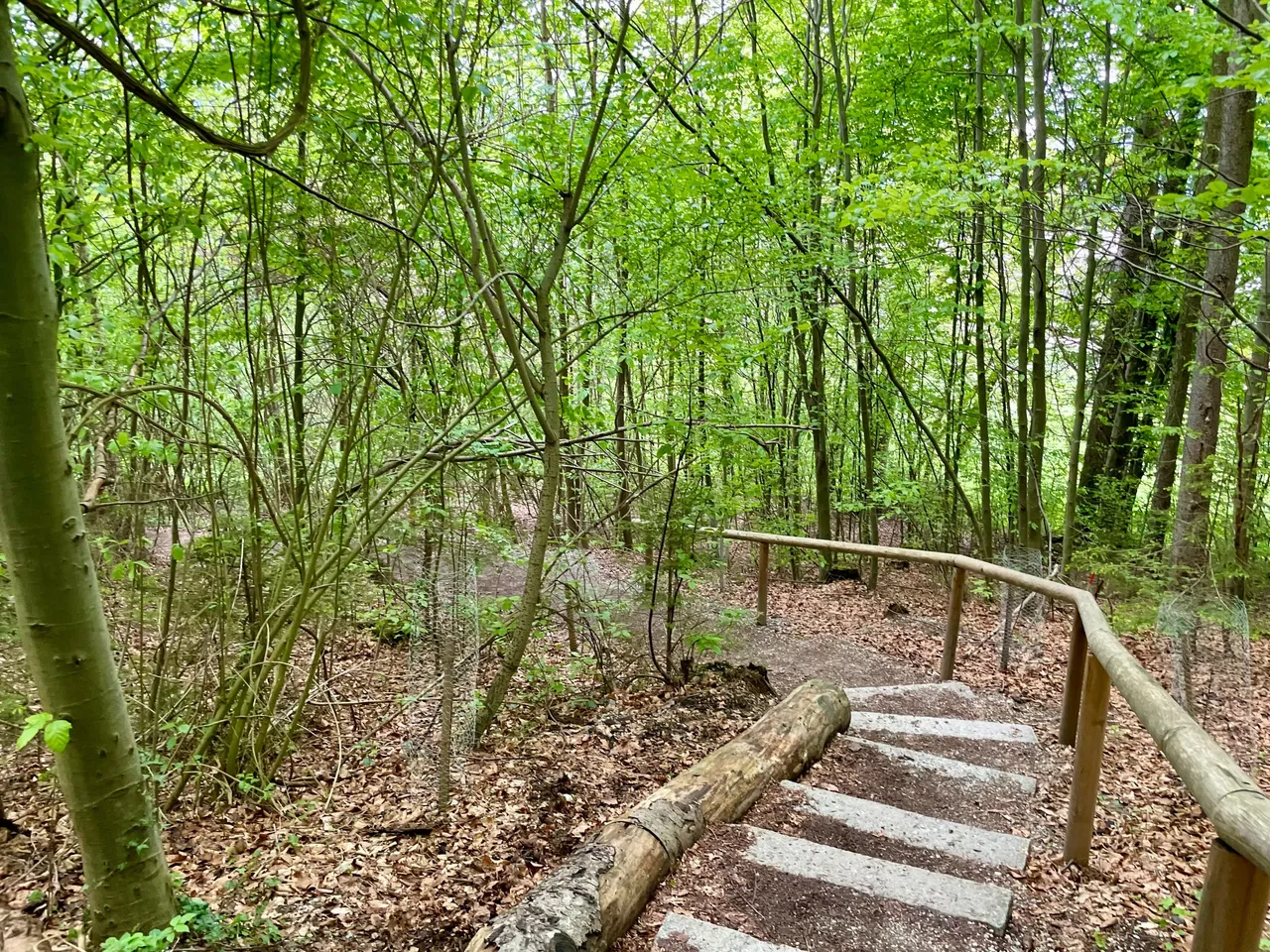
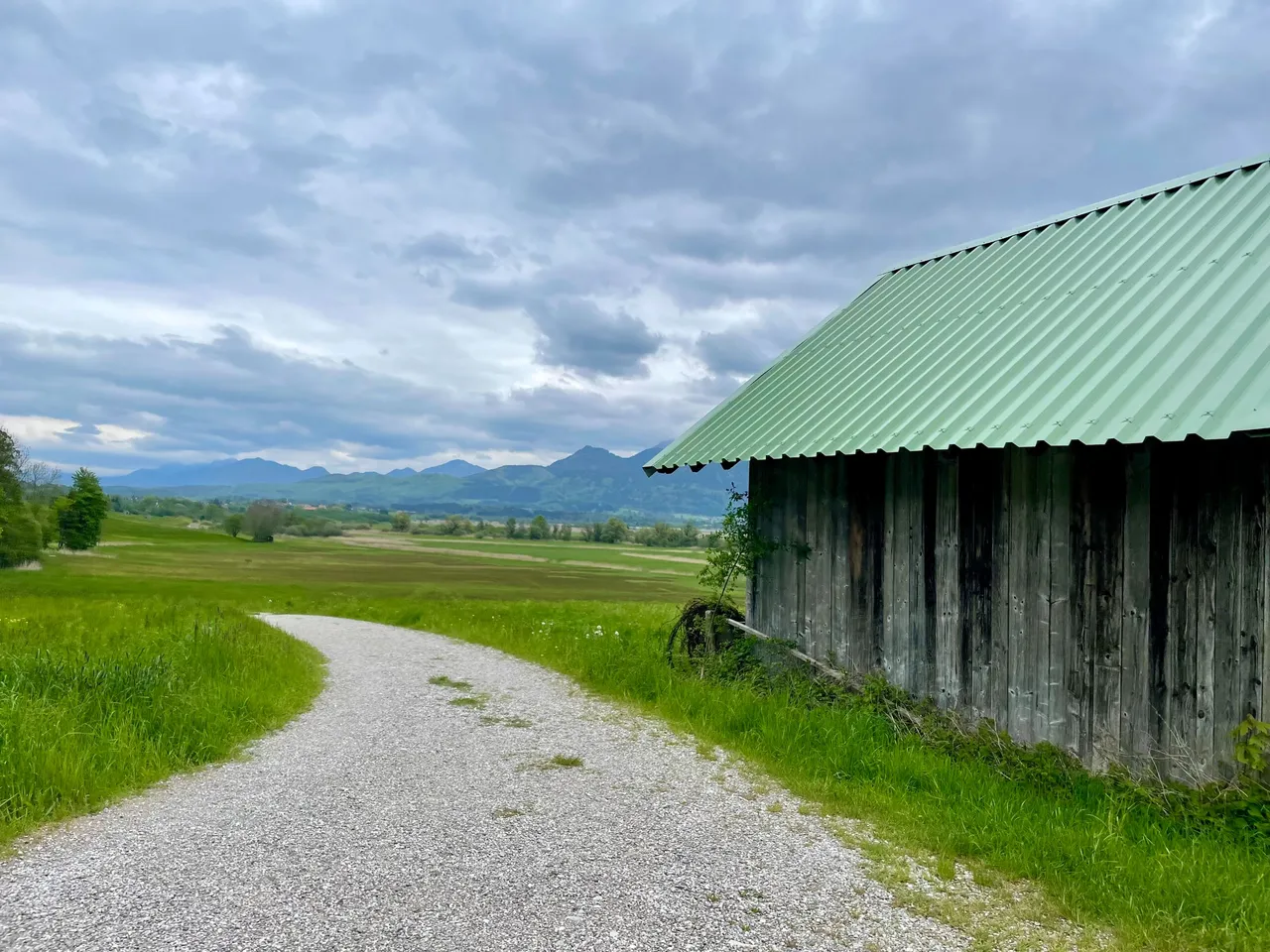
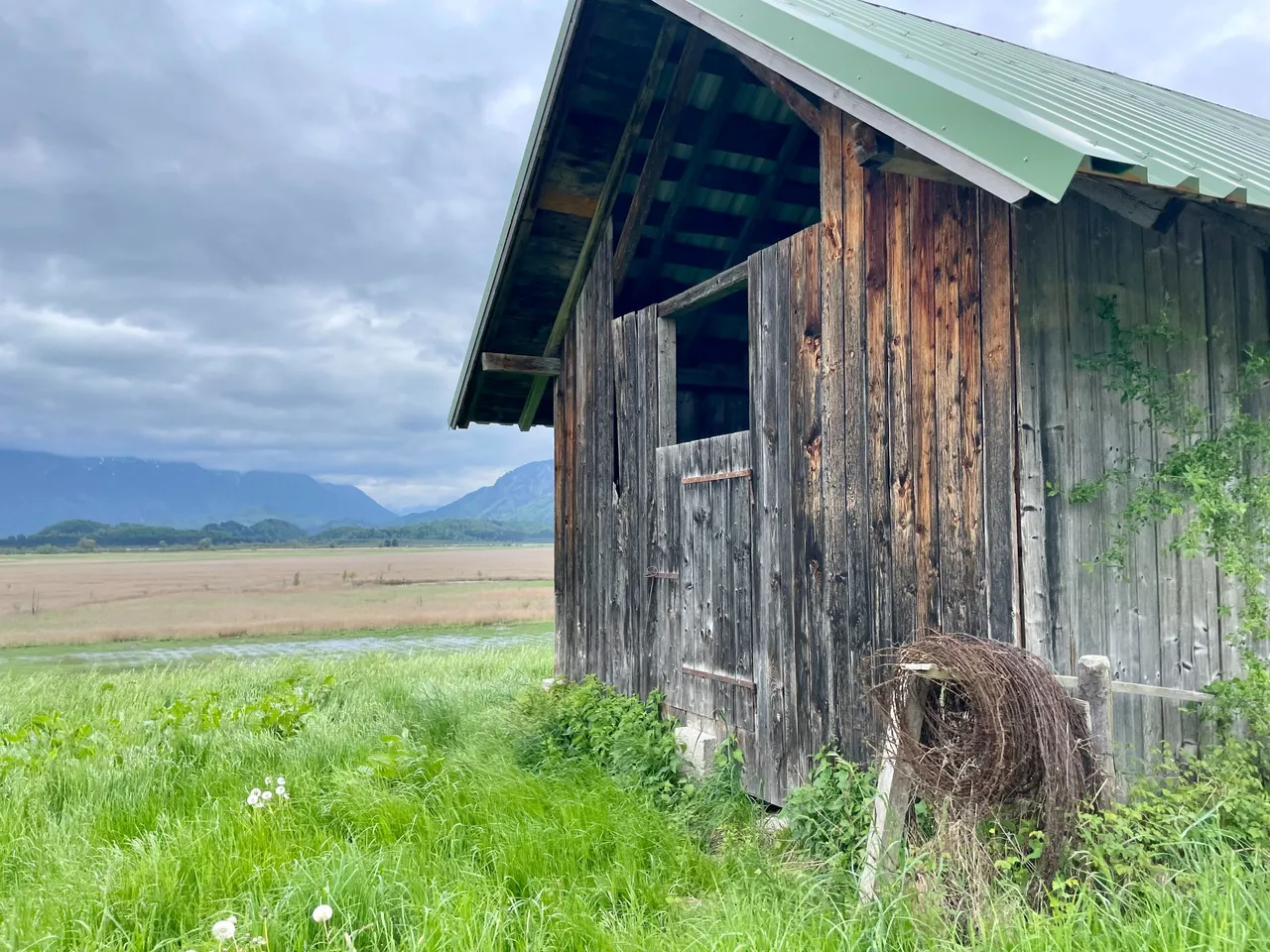
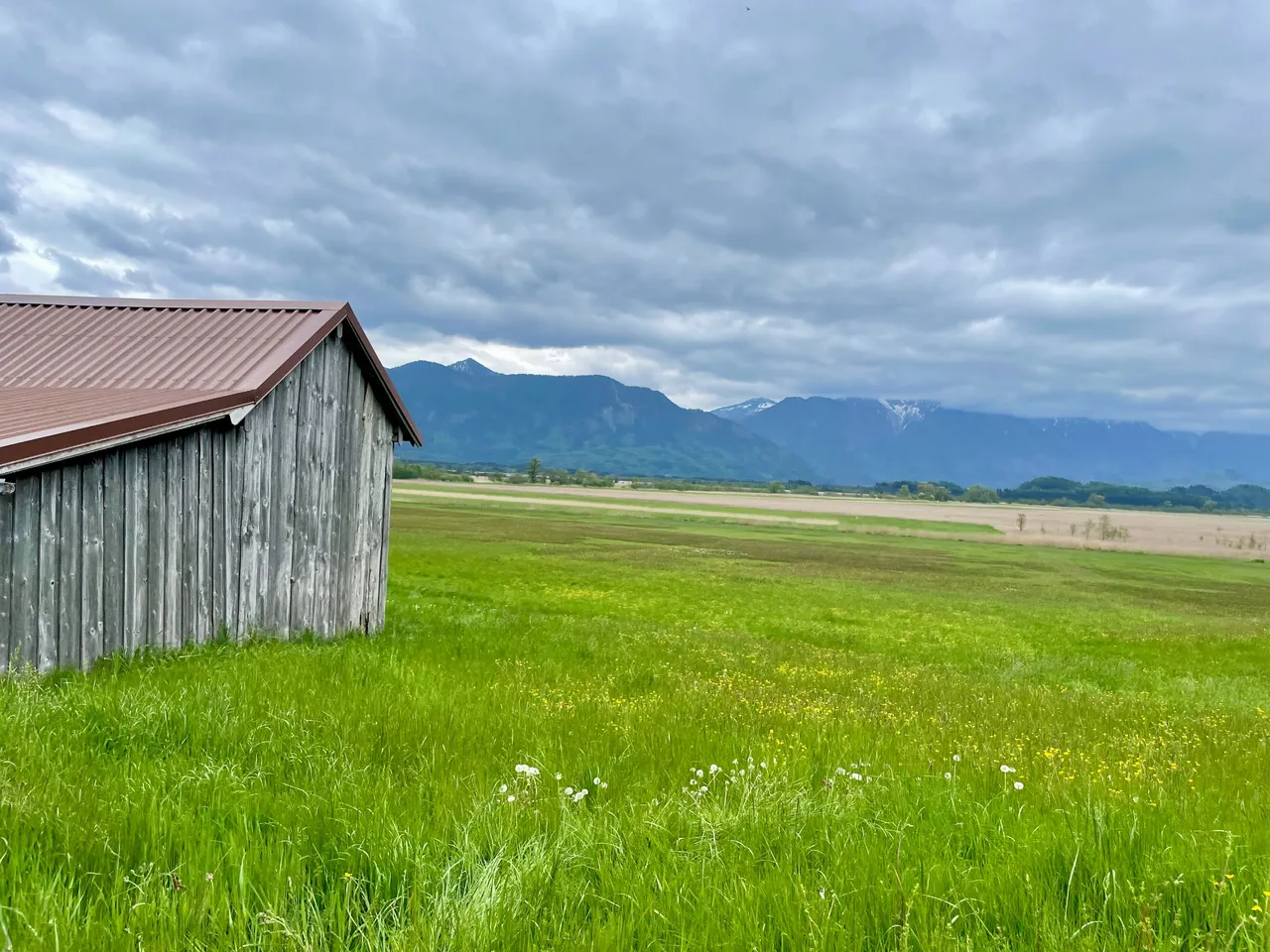
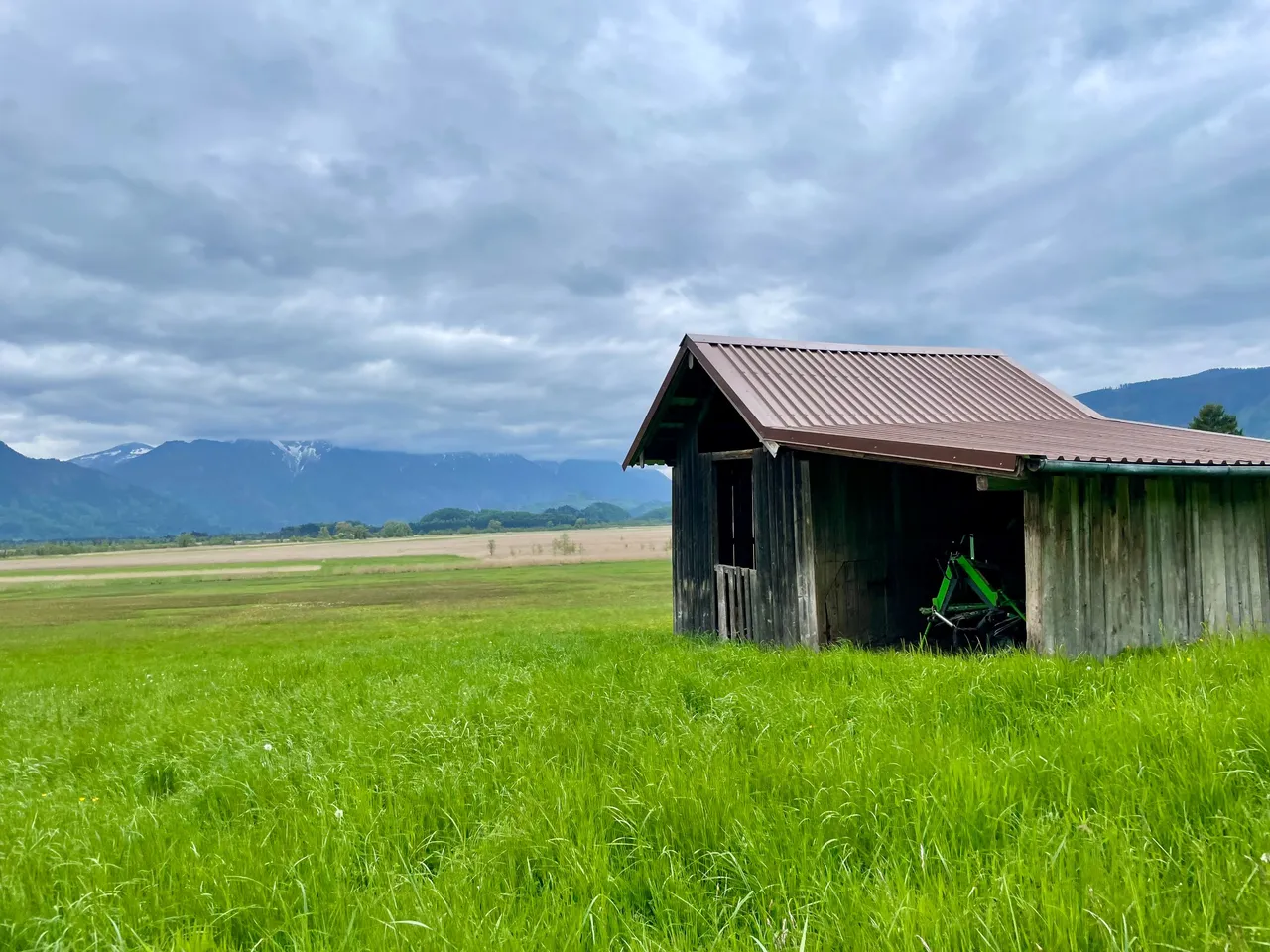
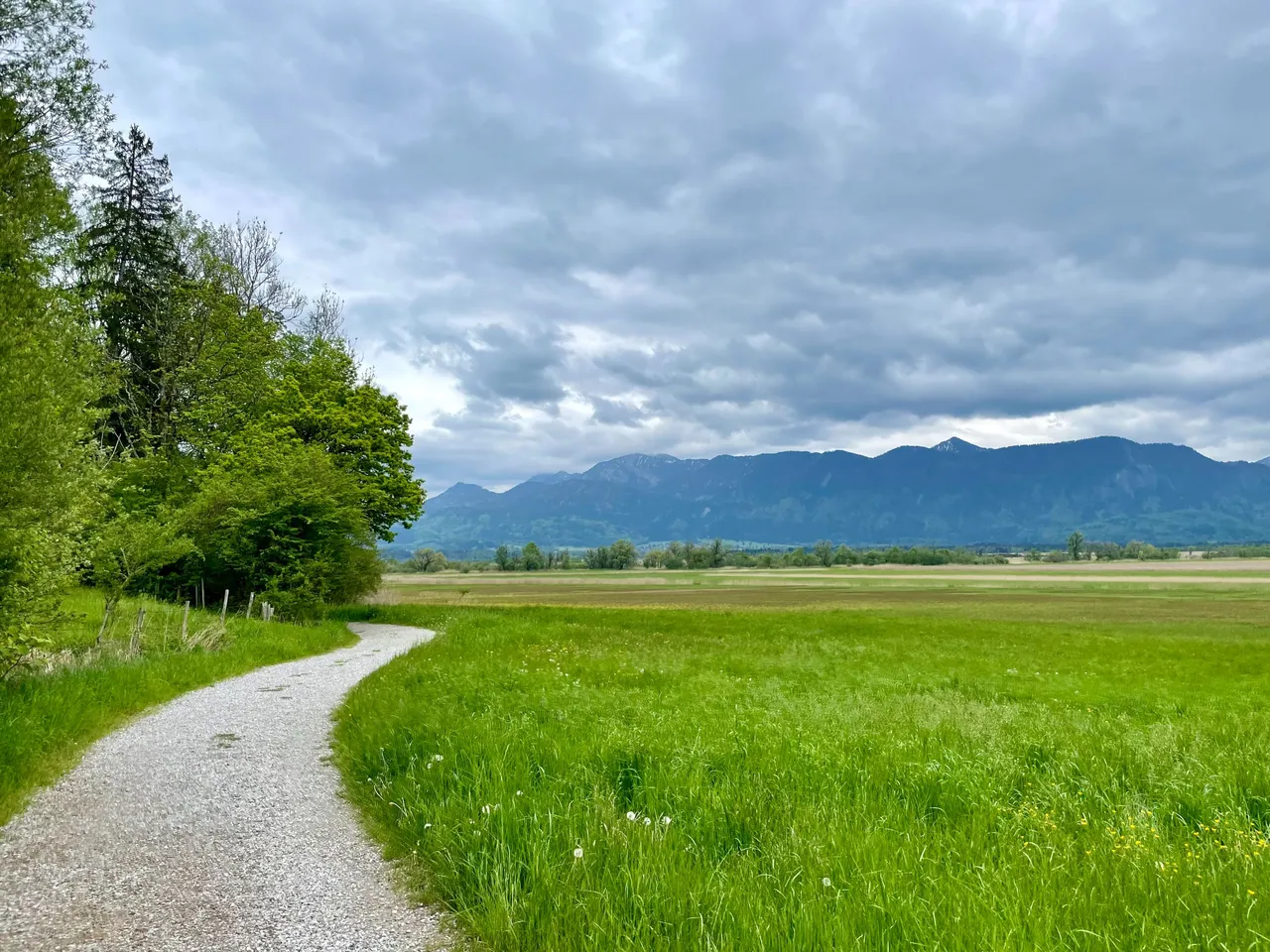
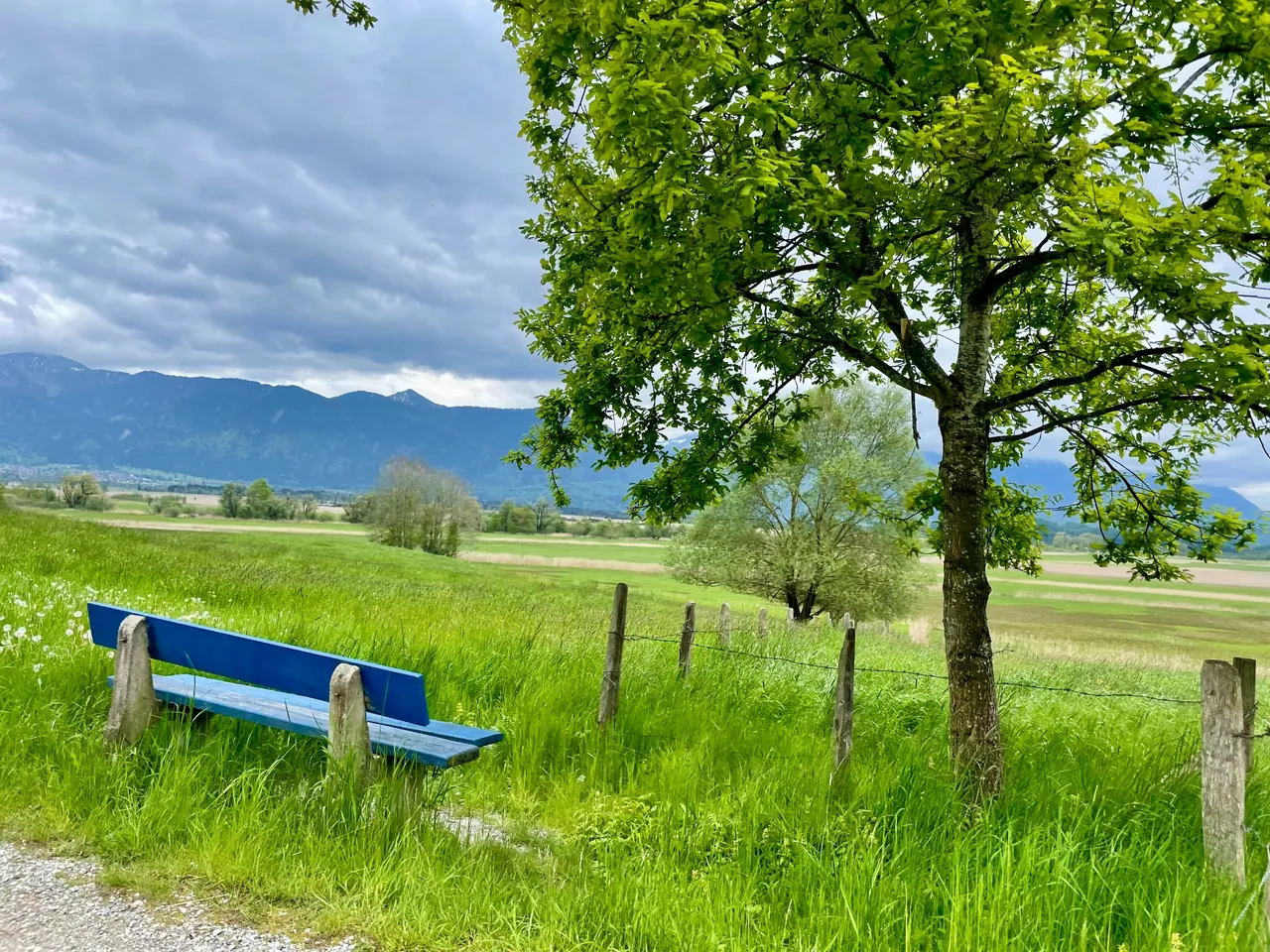
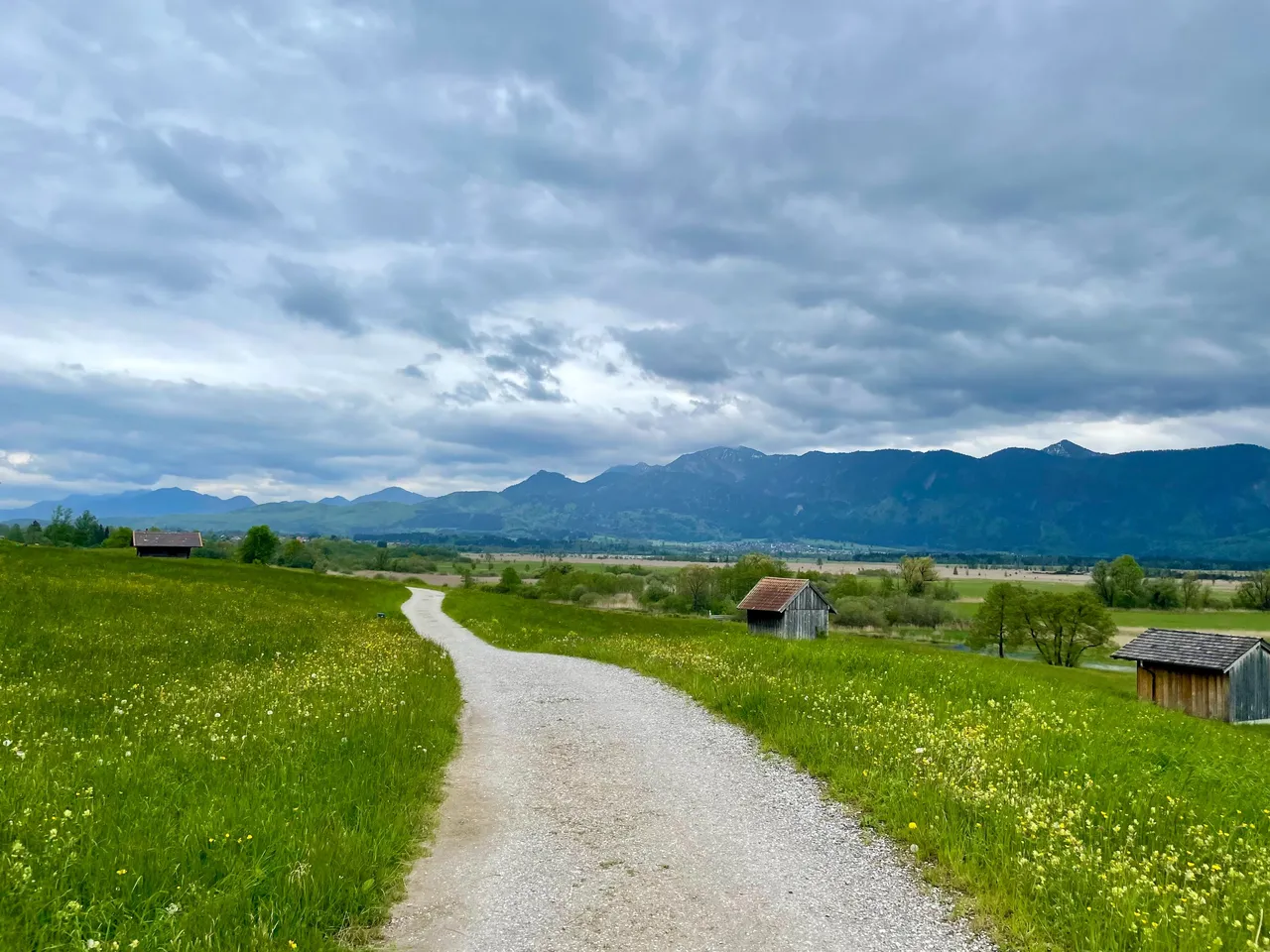
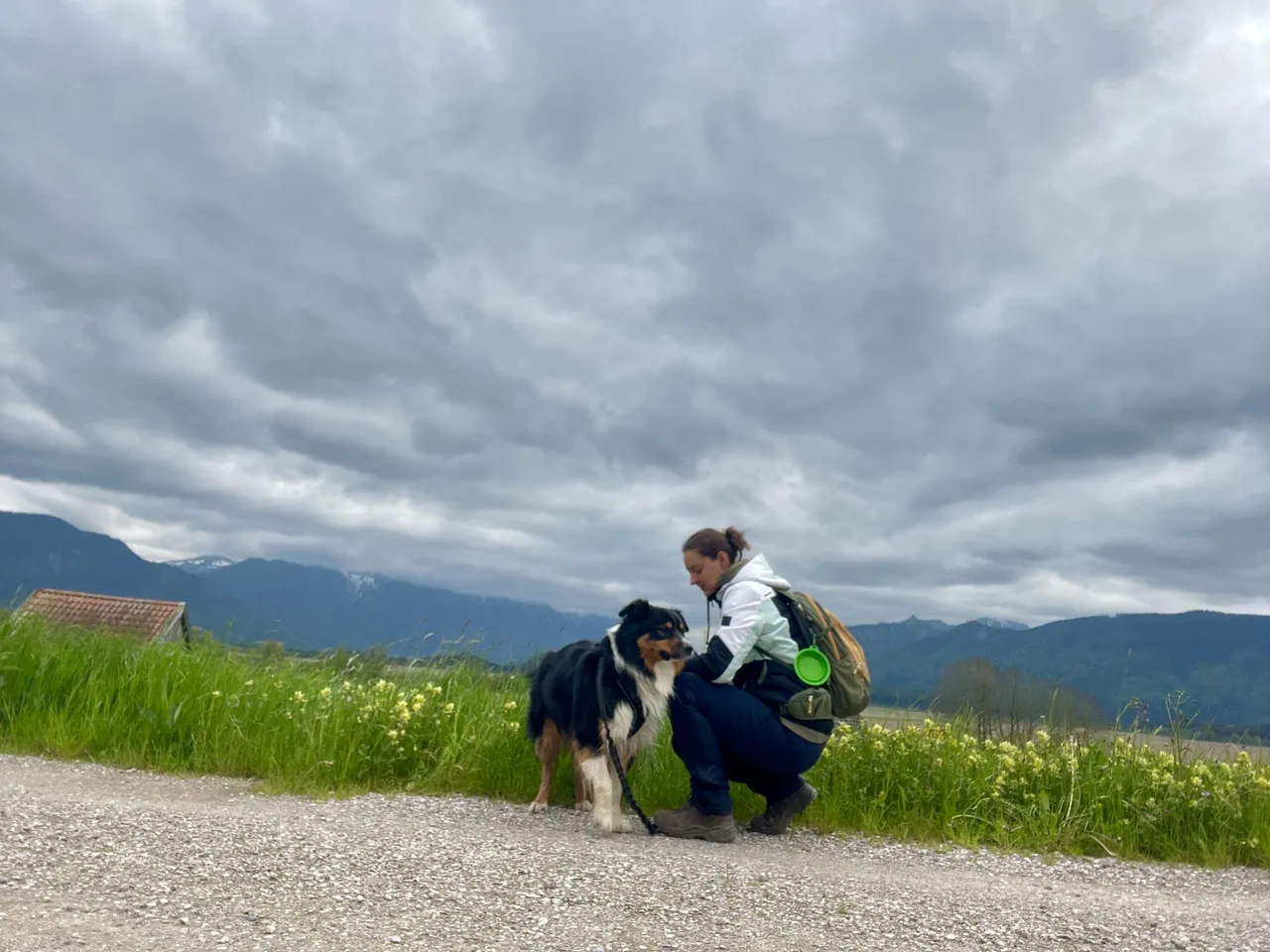
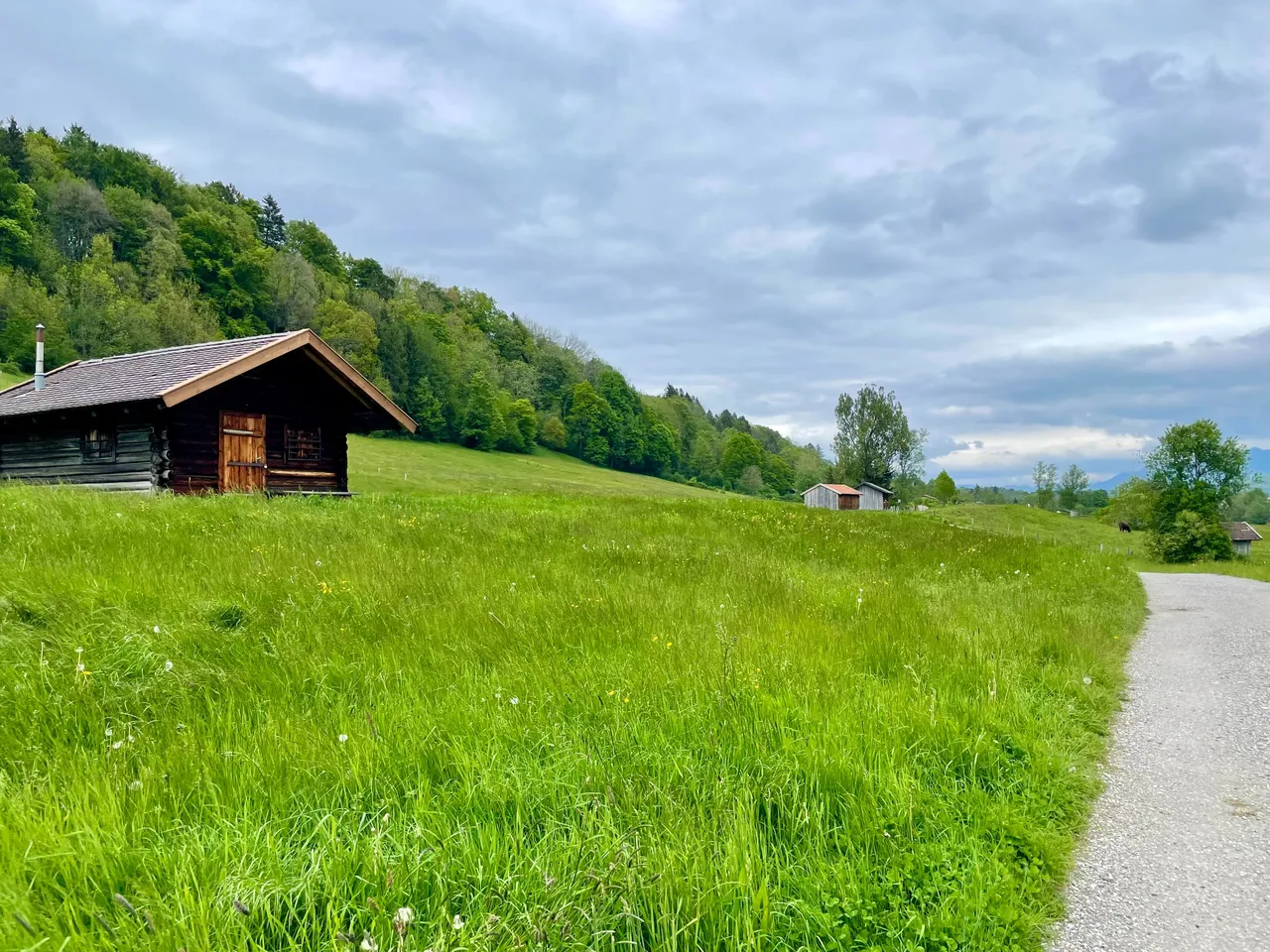
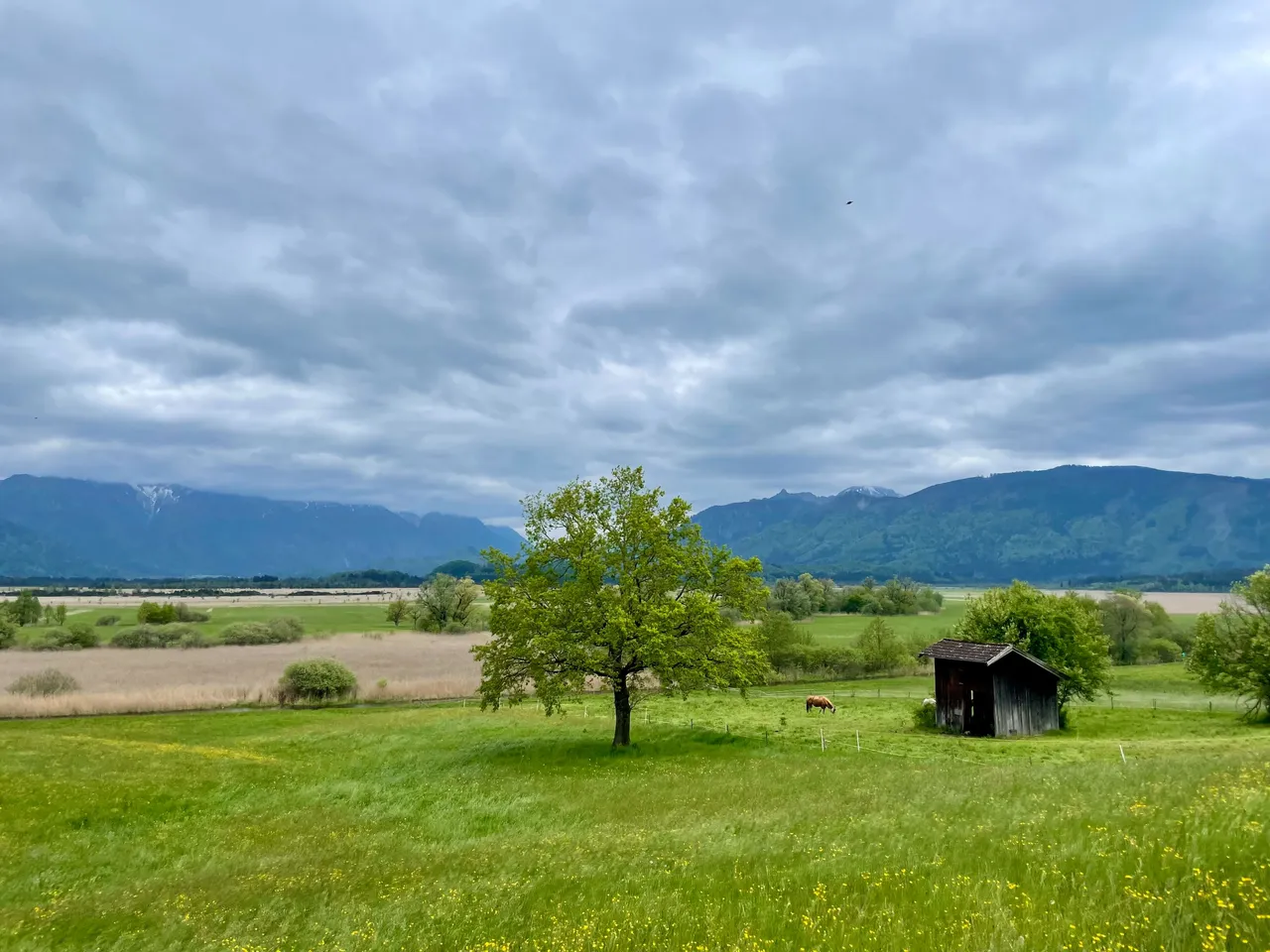
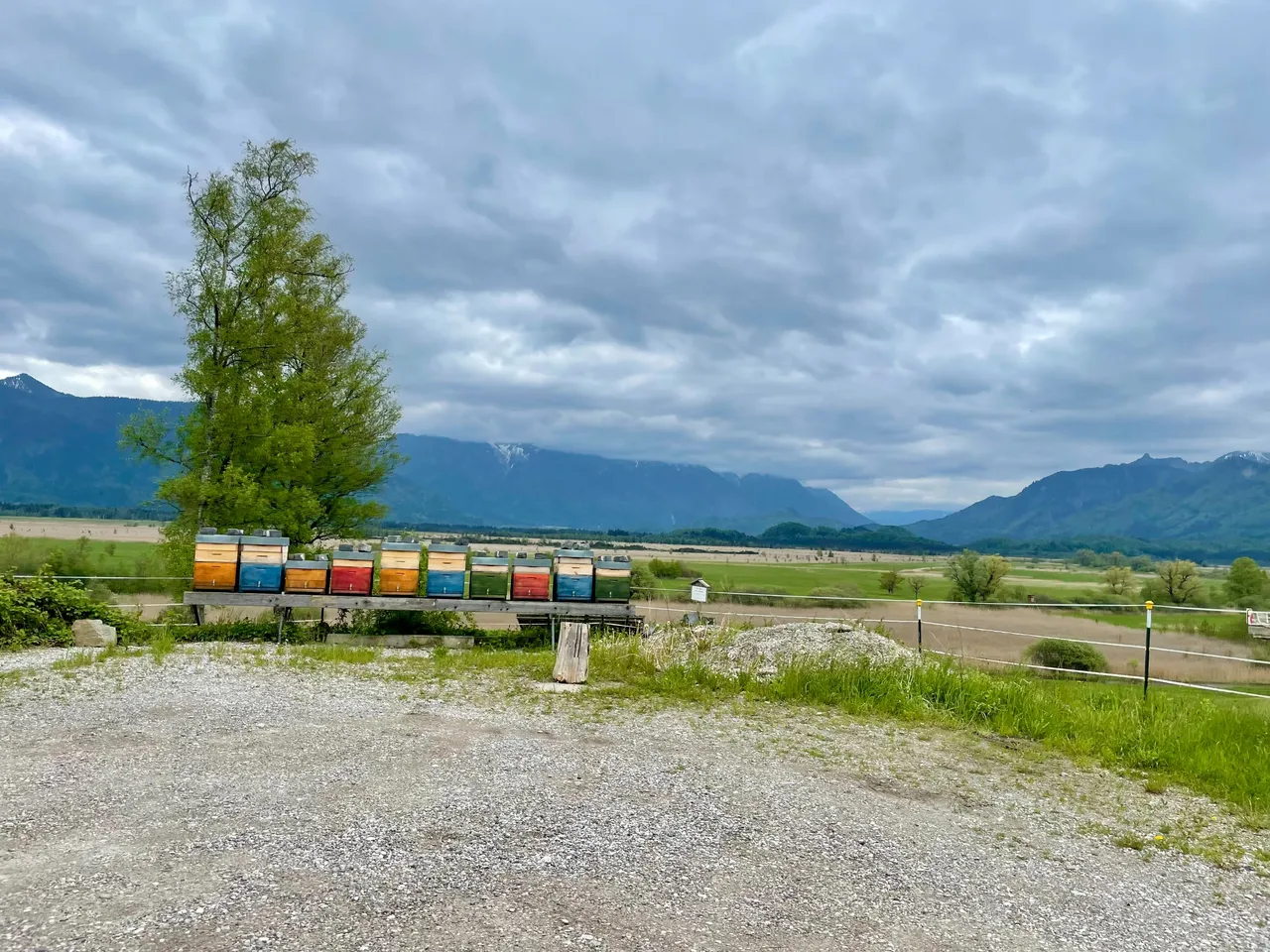
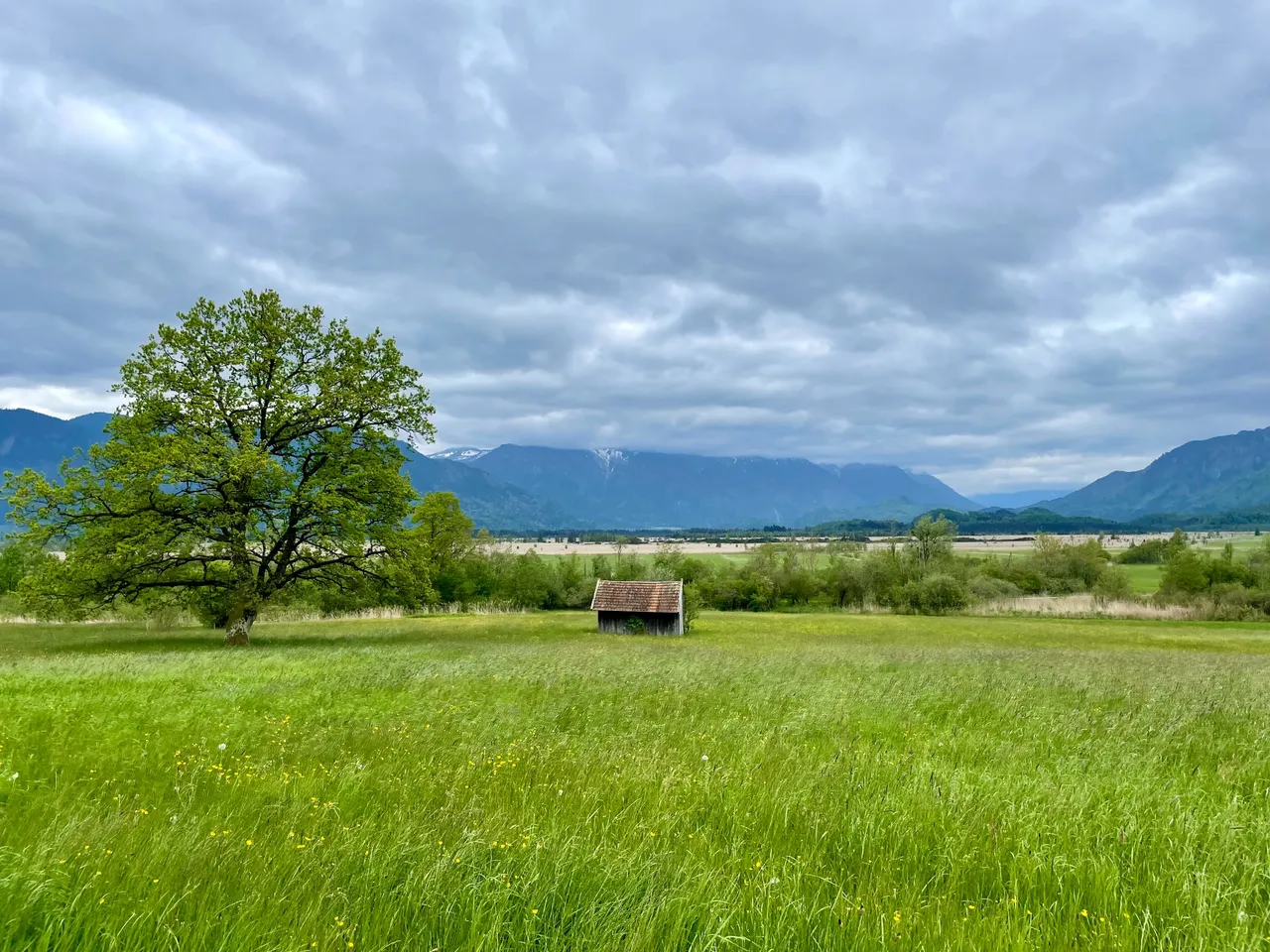
After those almost 12km walk, Chapo and I were super tired so we didn´t visit the church but made a short stop in the beer garden "Ähndl" to refresh before we went back home.
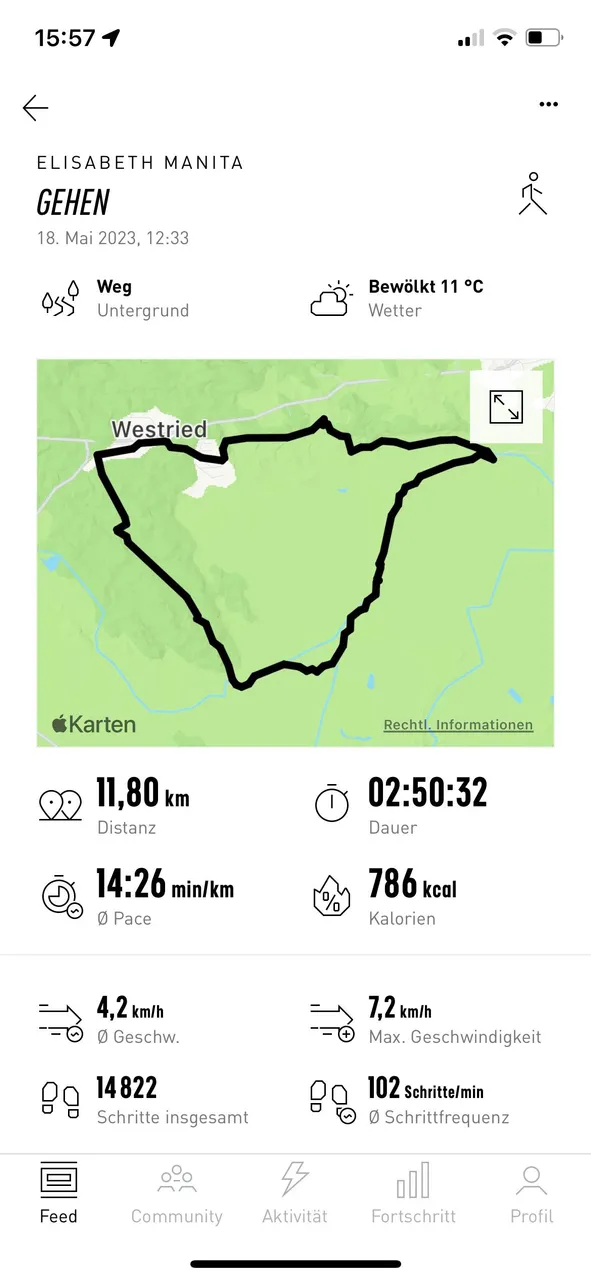
I hope you enjoyed the walk just as much as we did!
Cheers,
Liz
